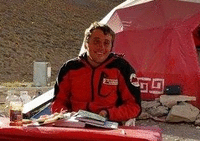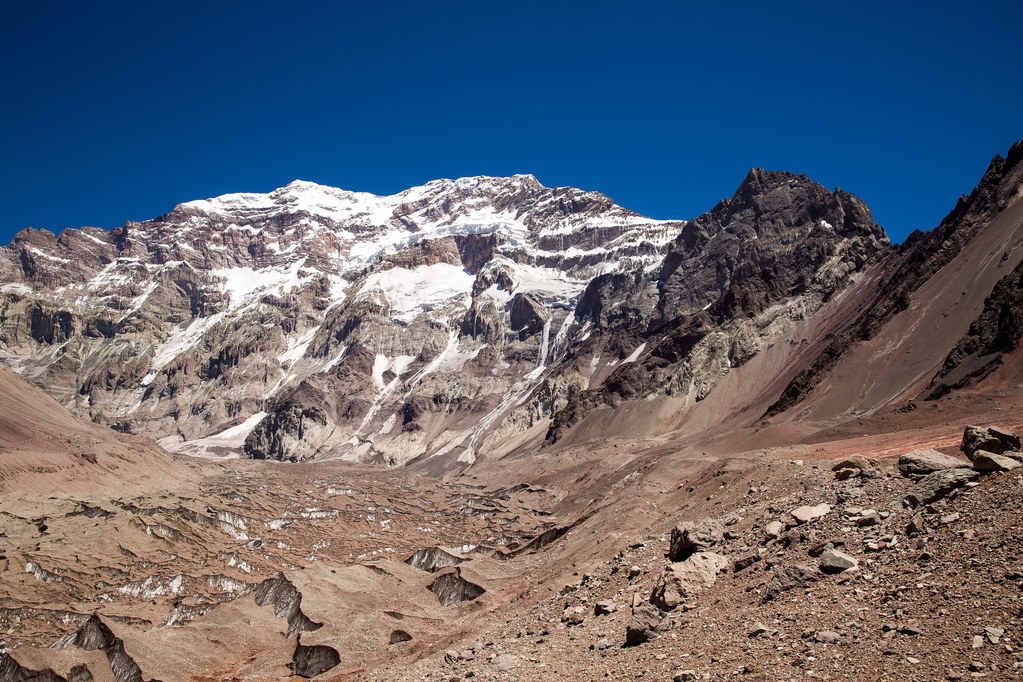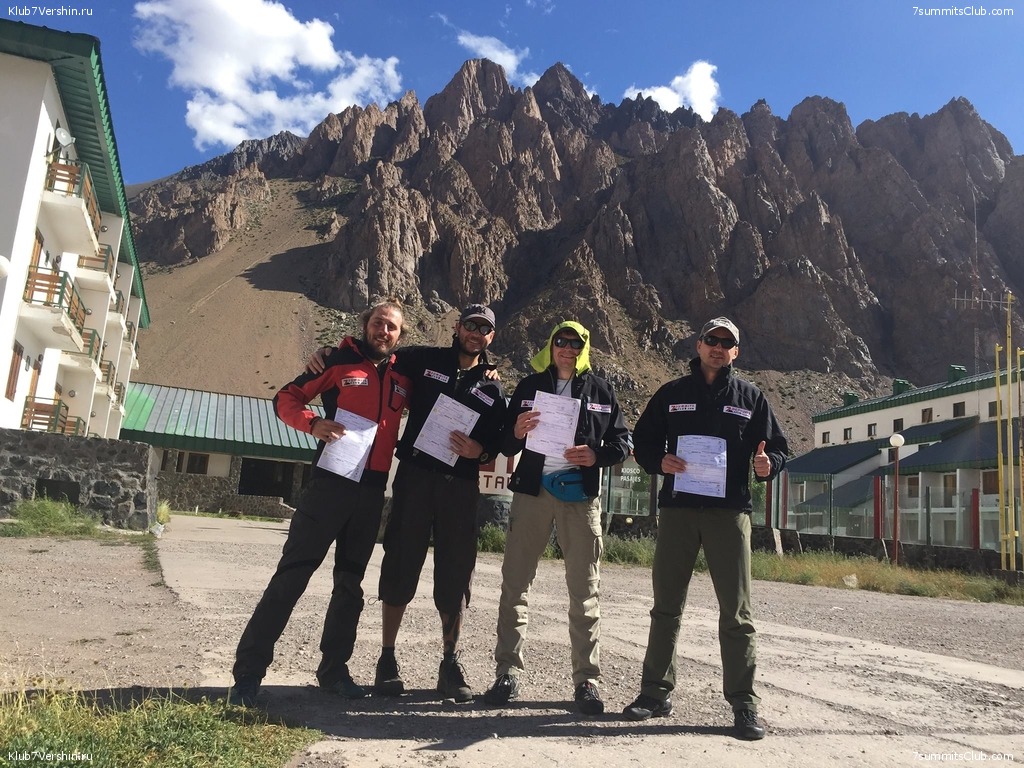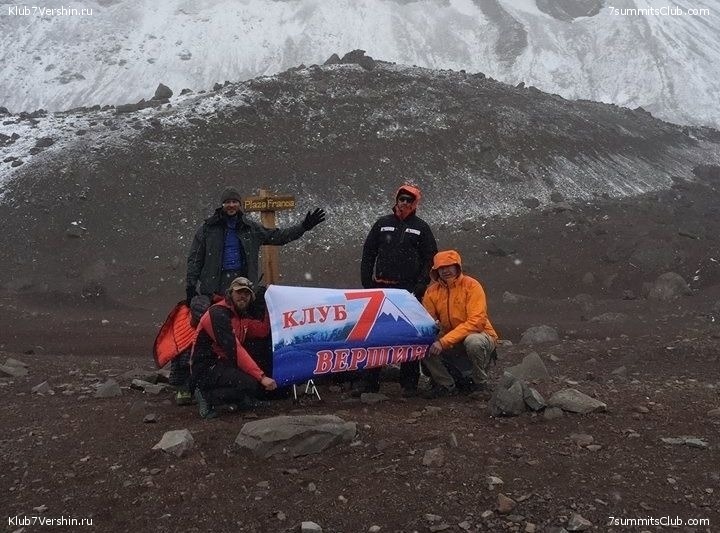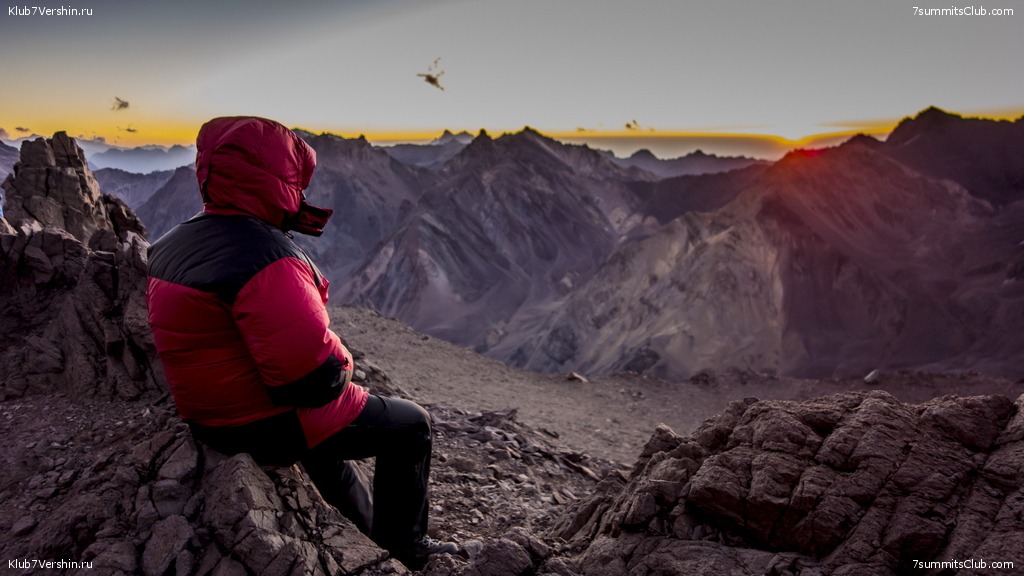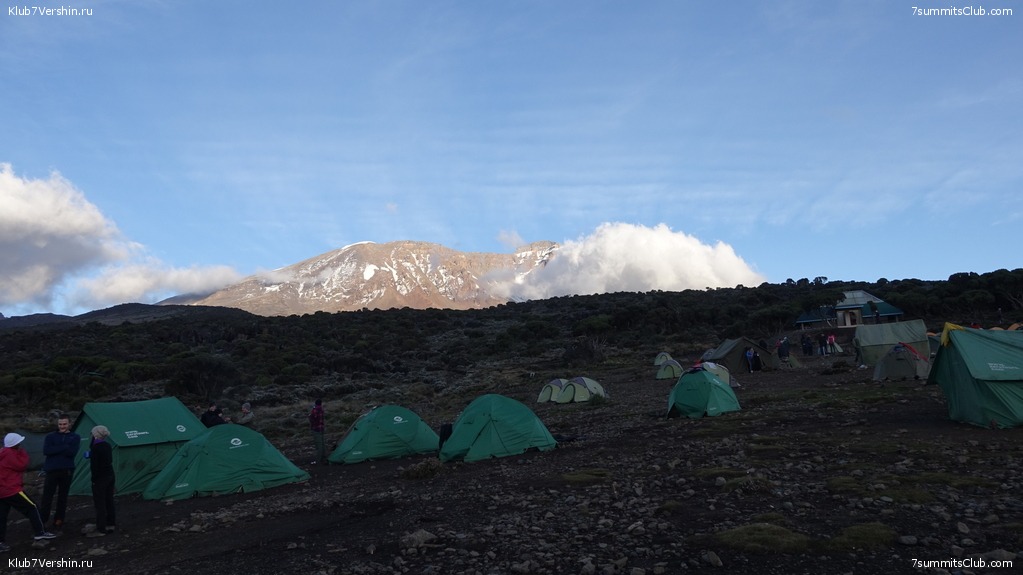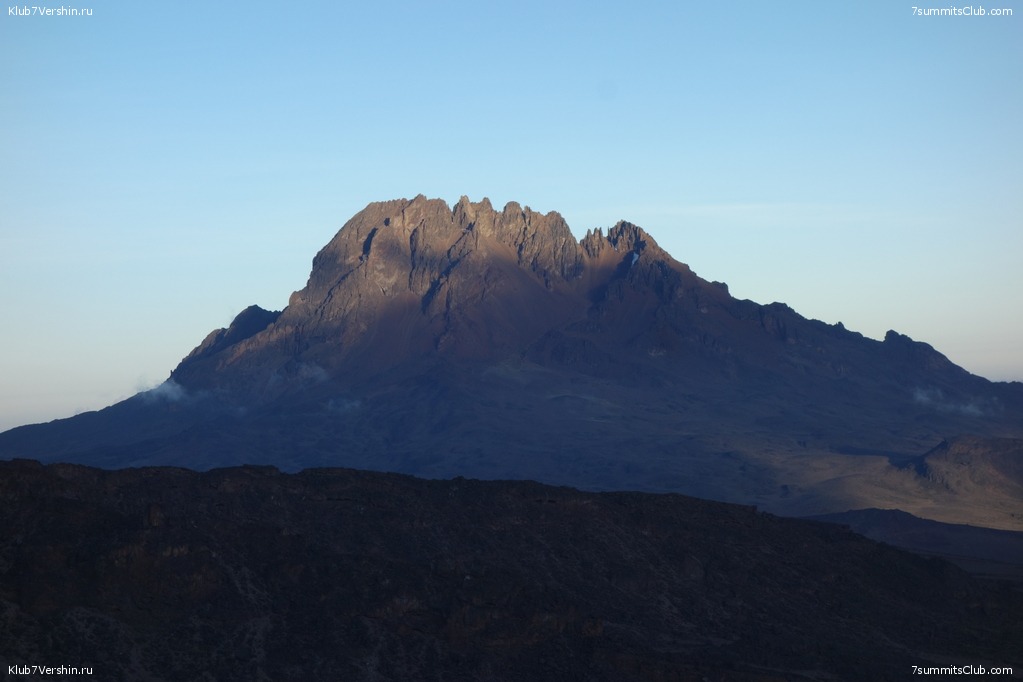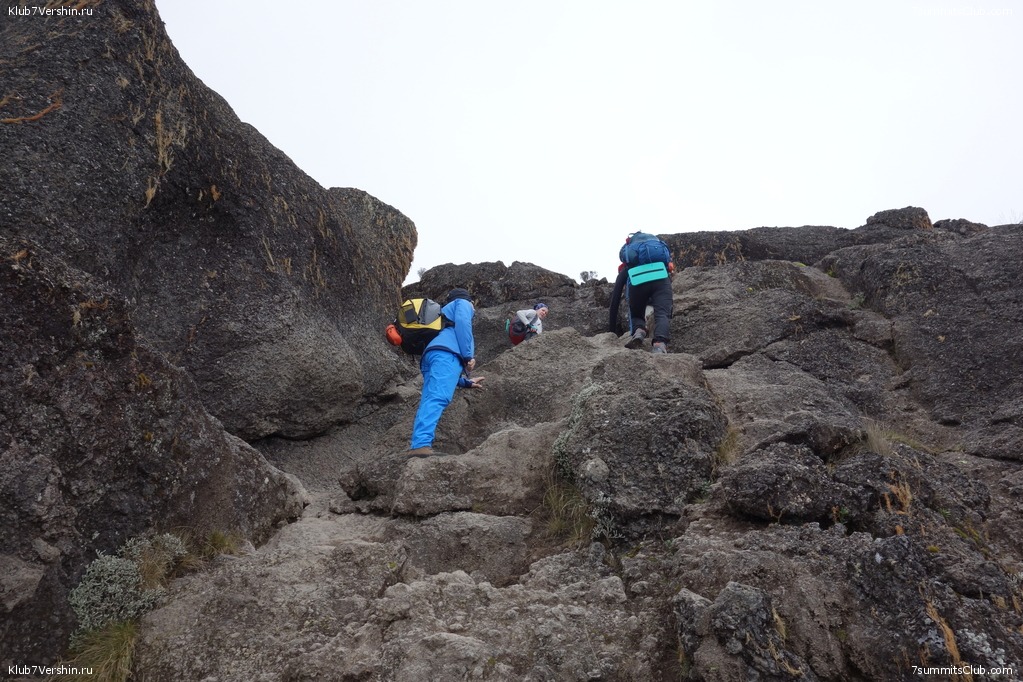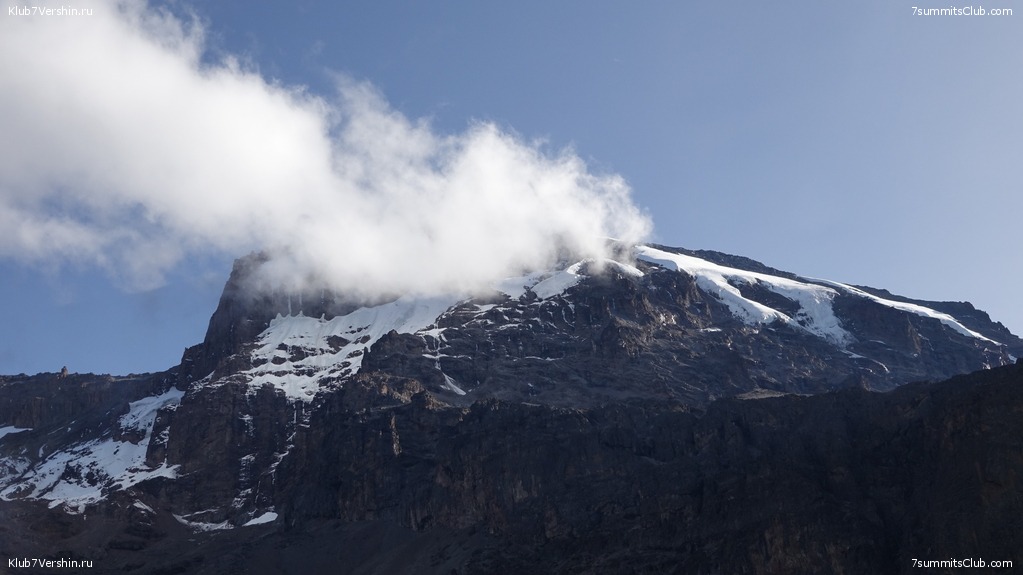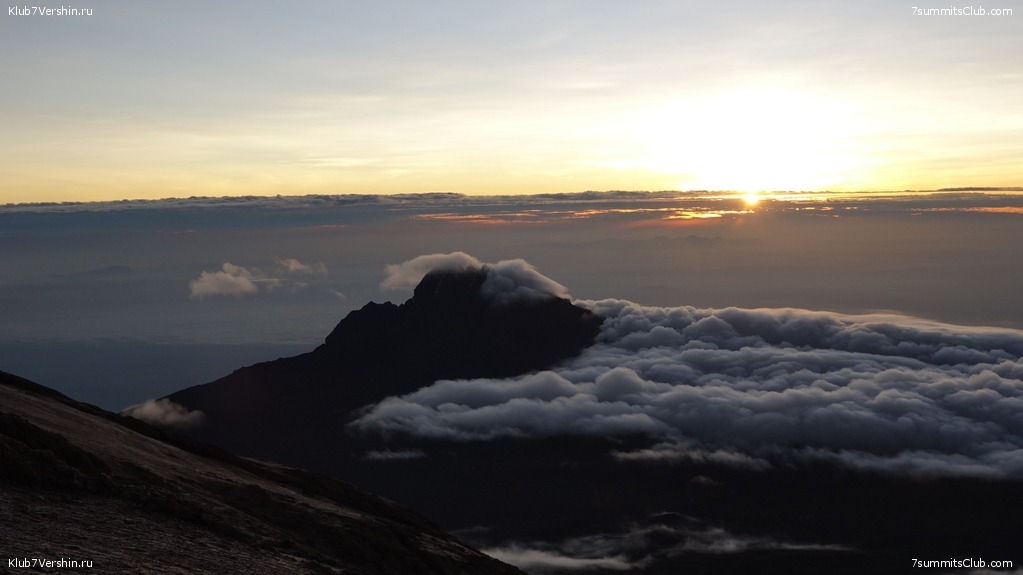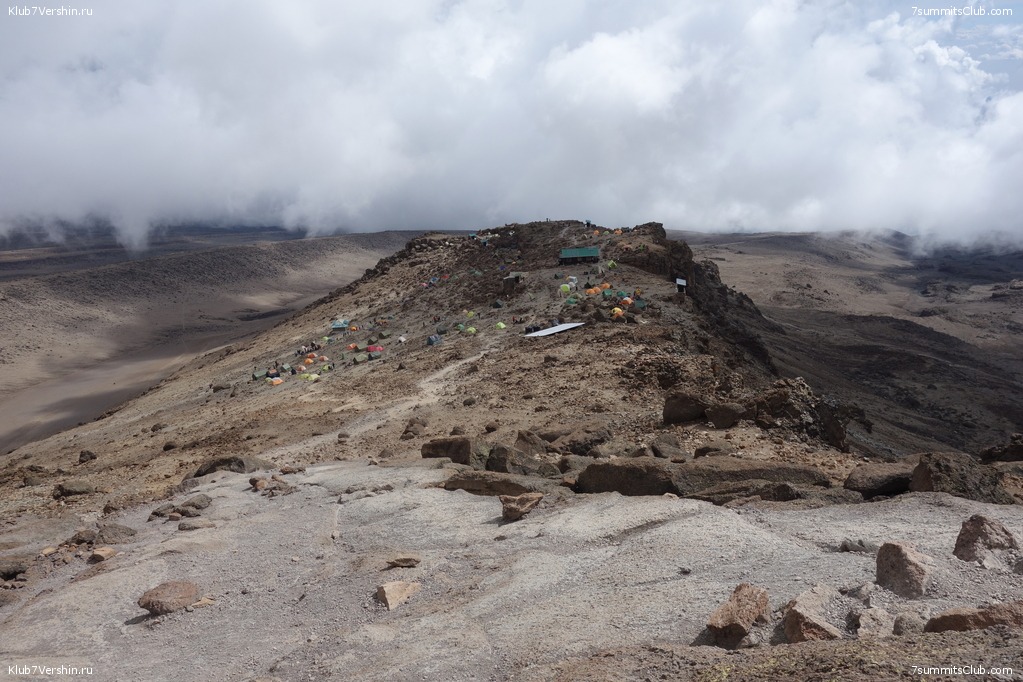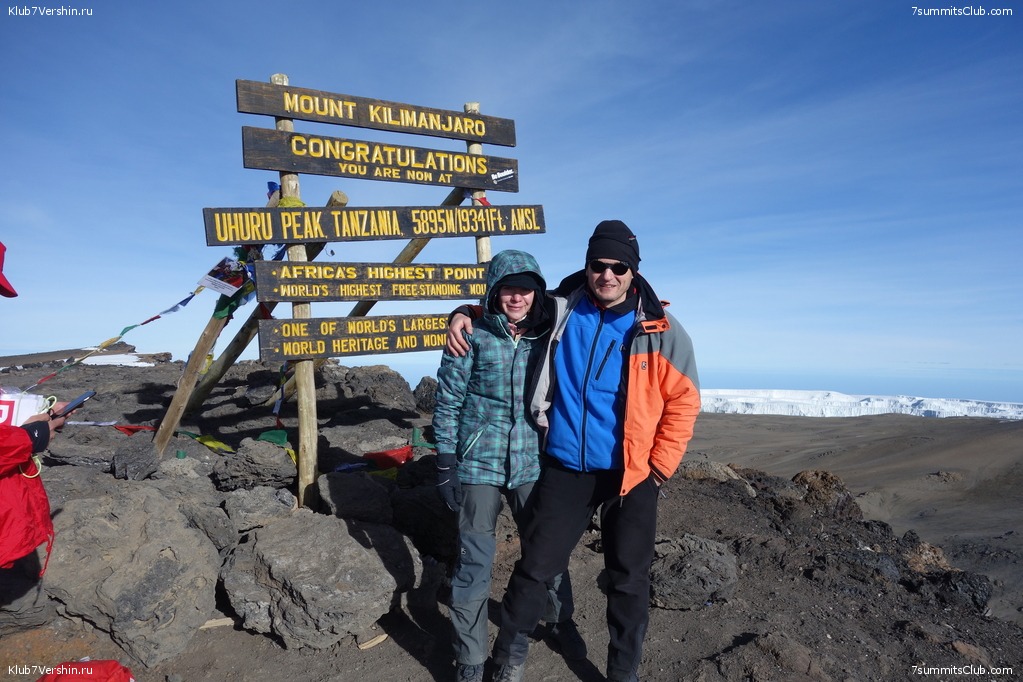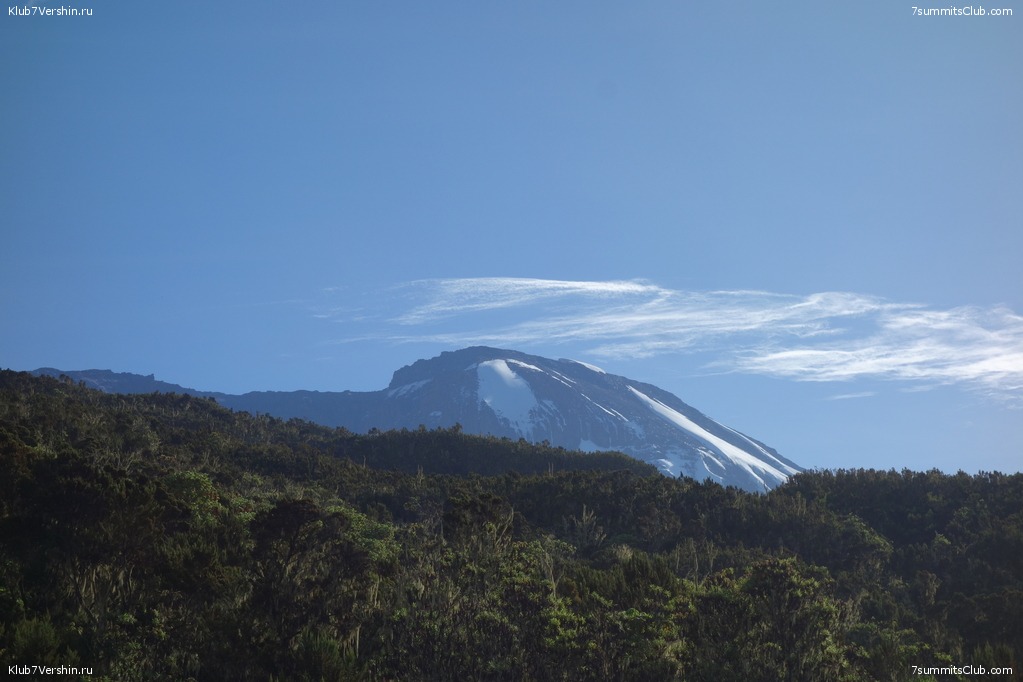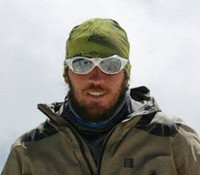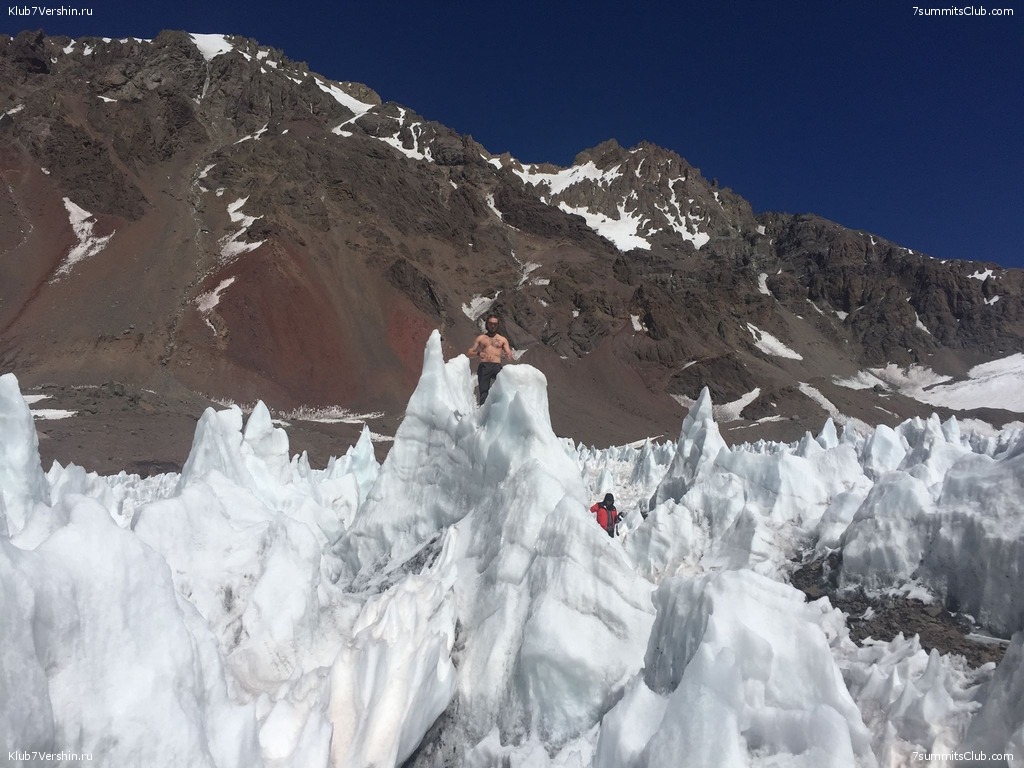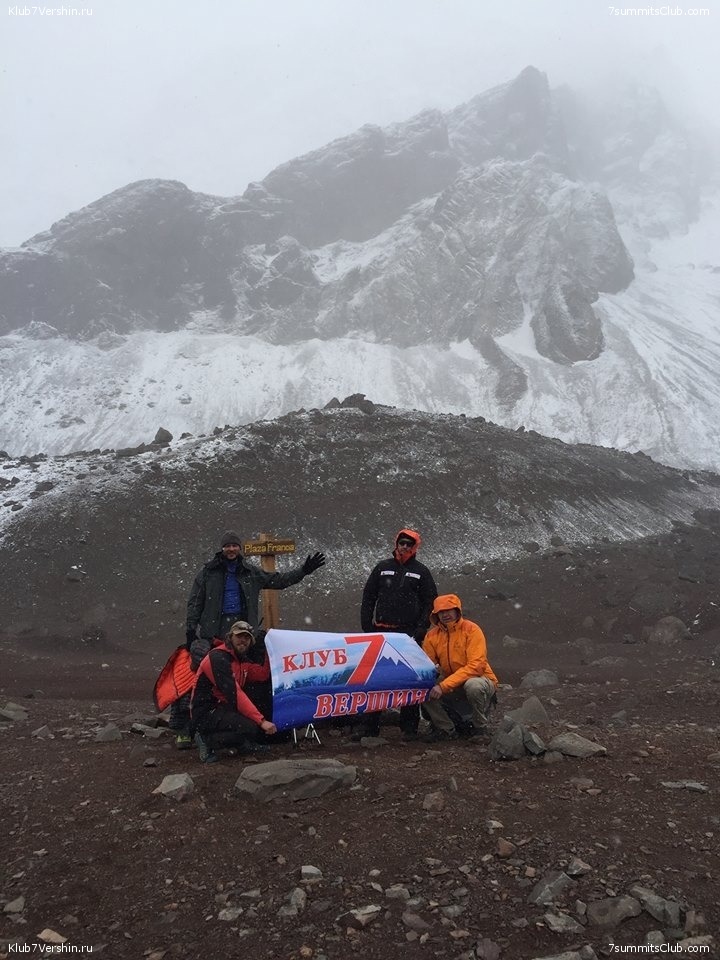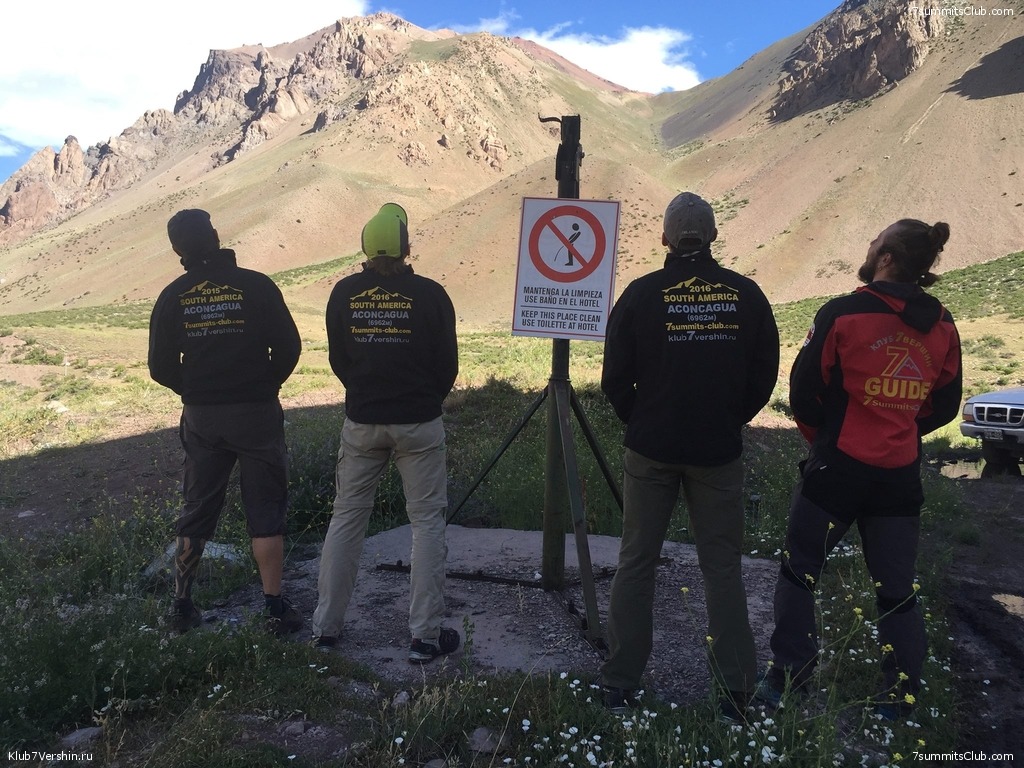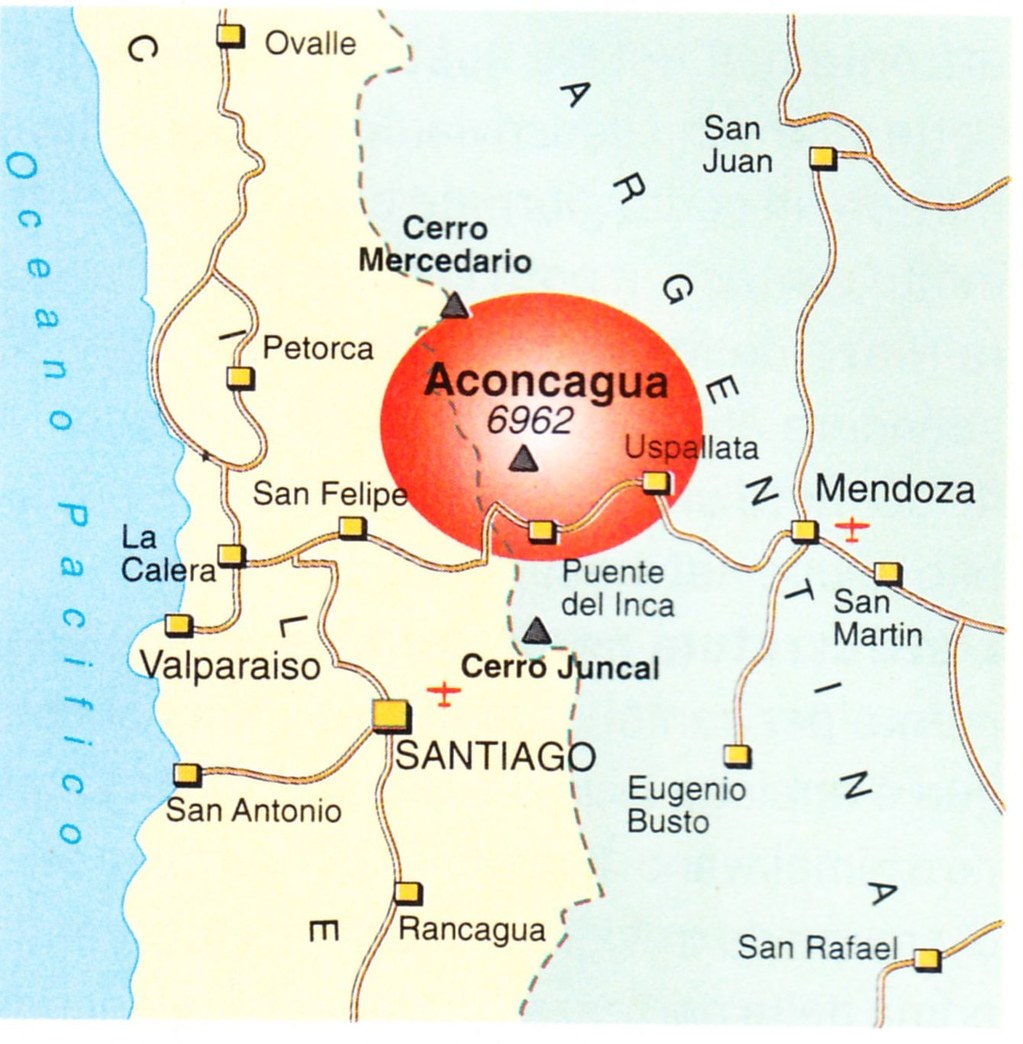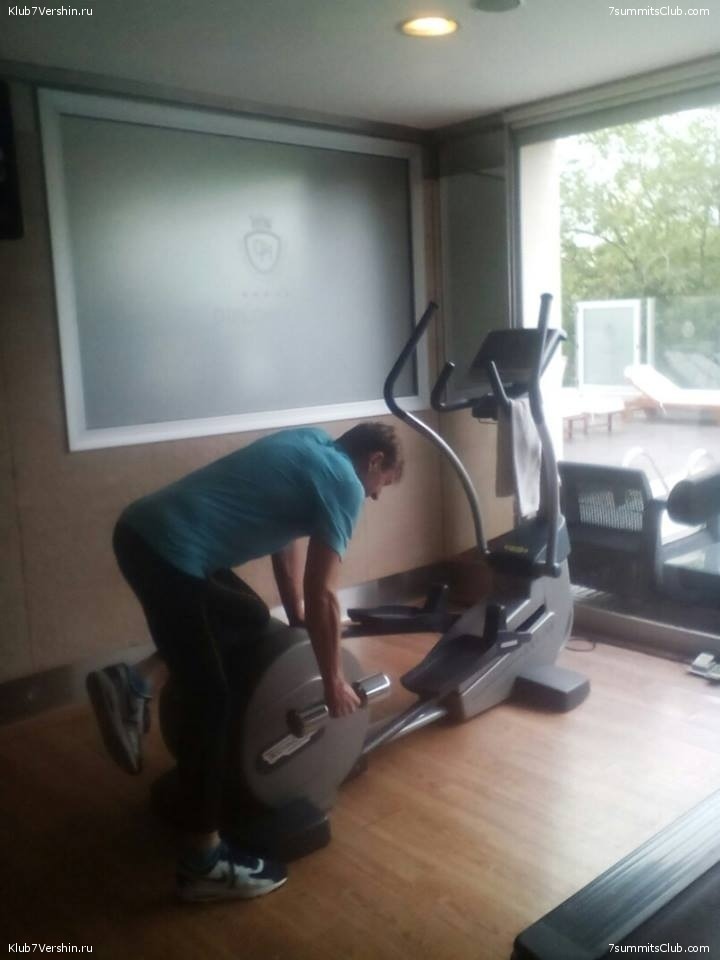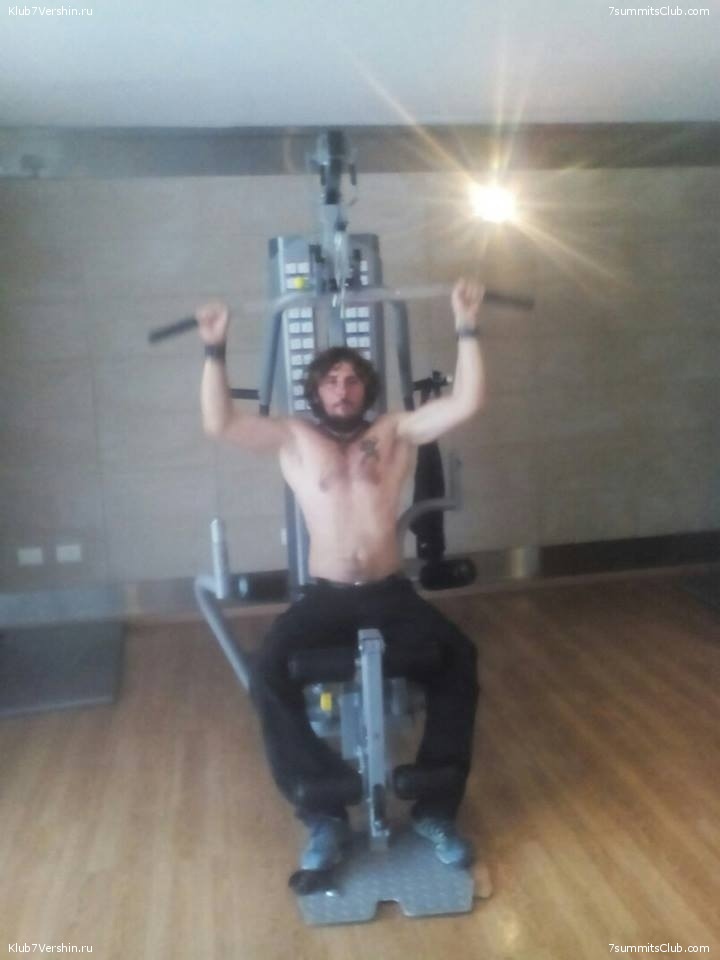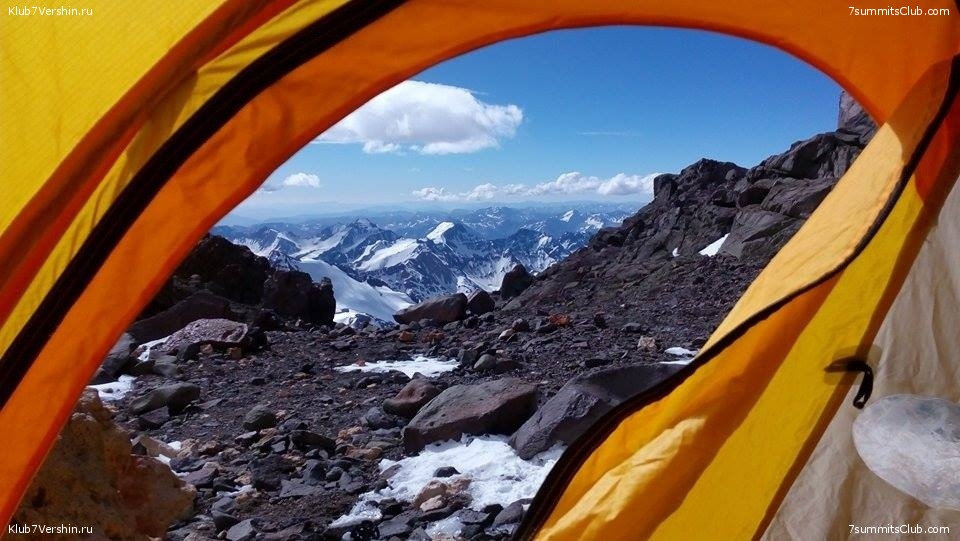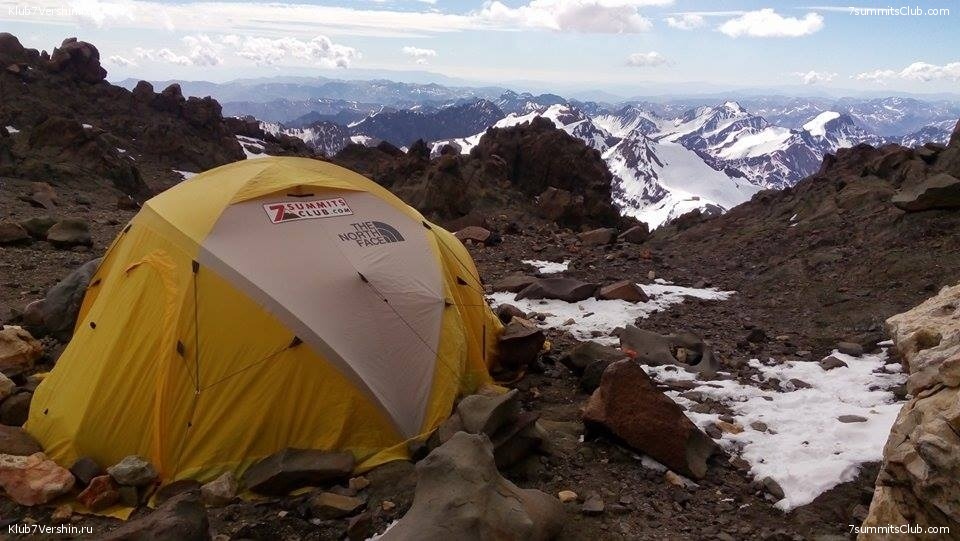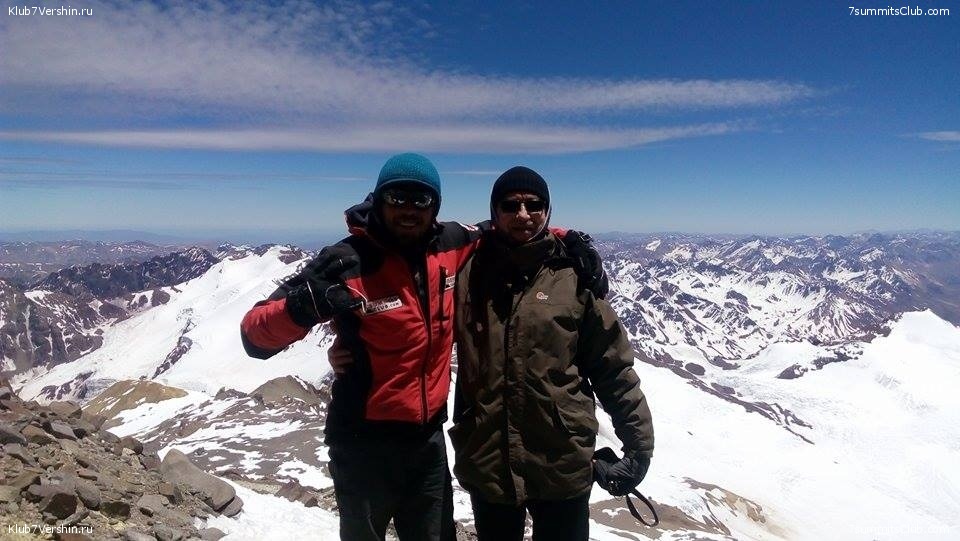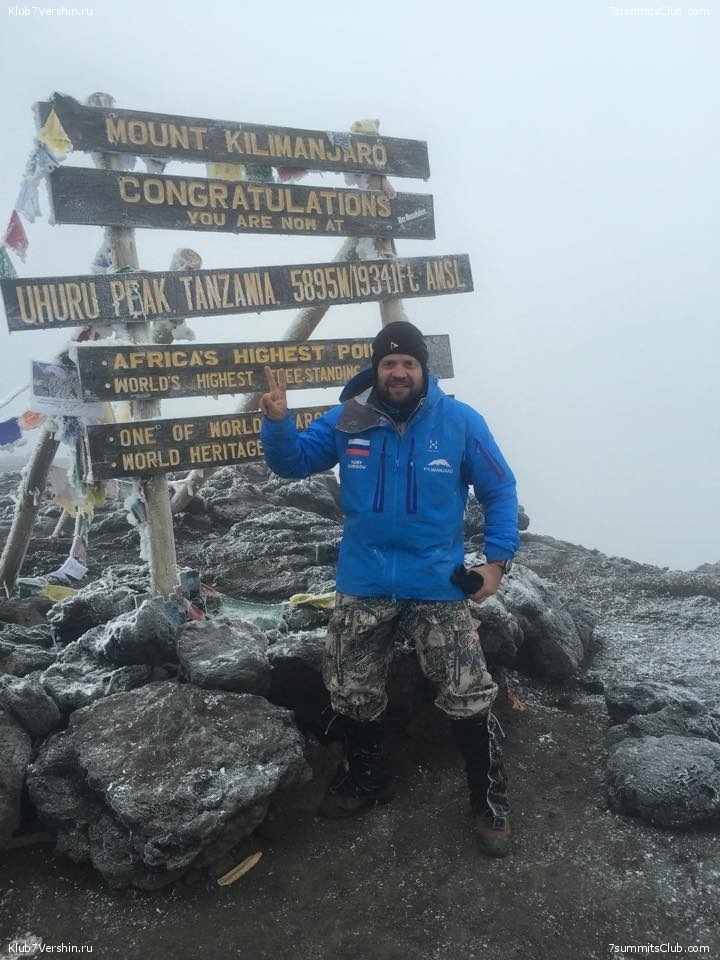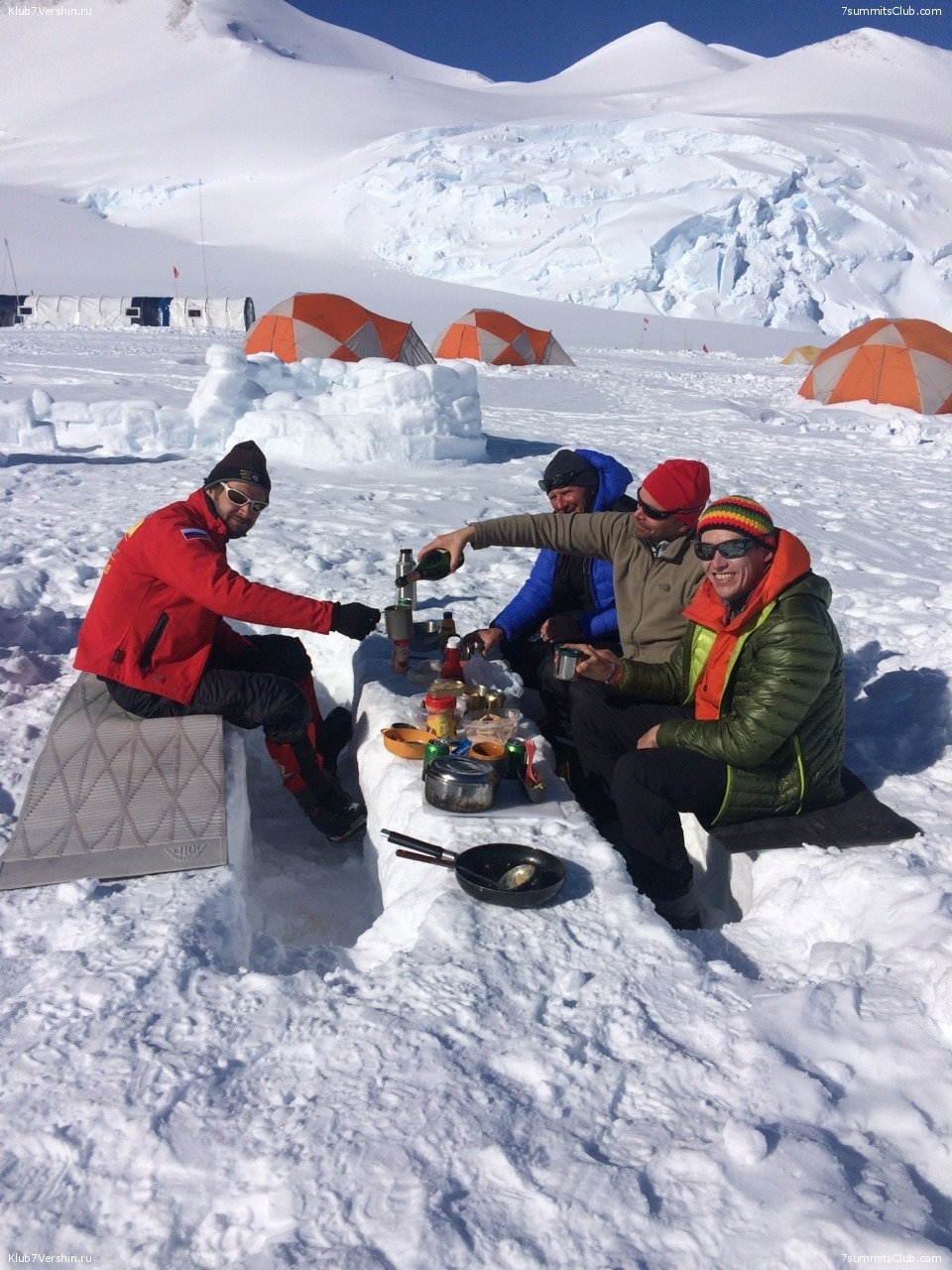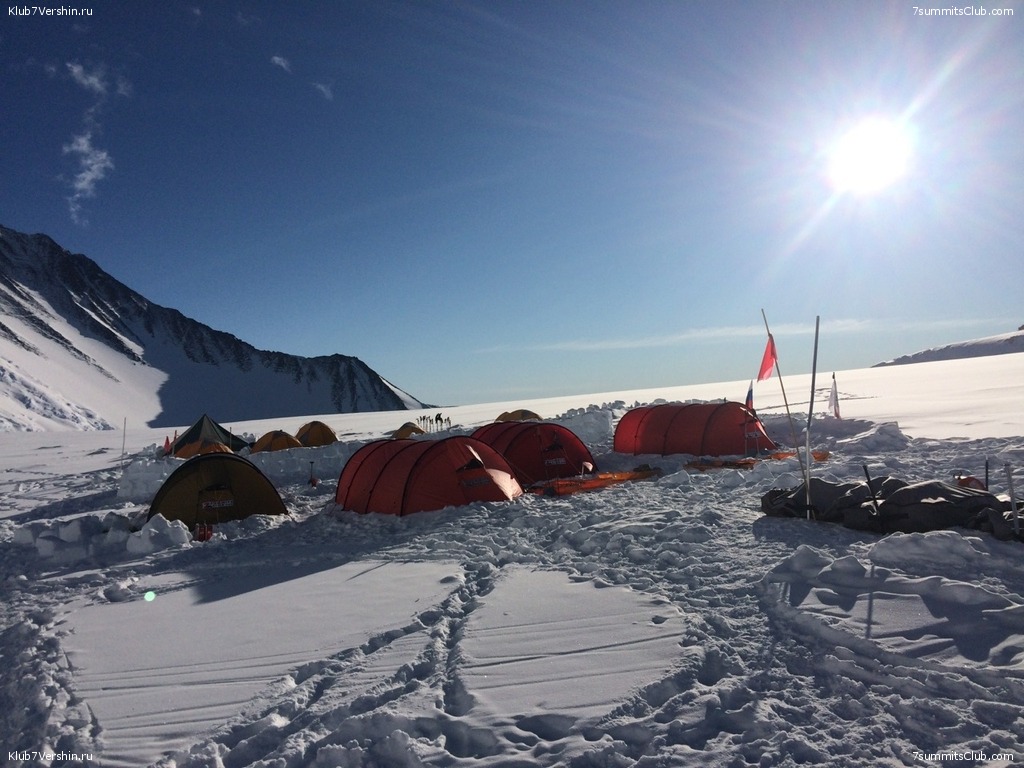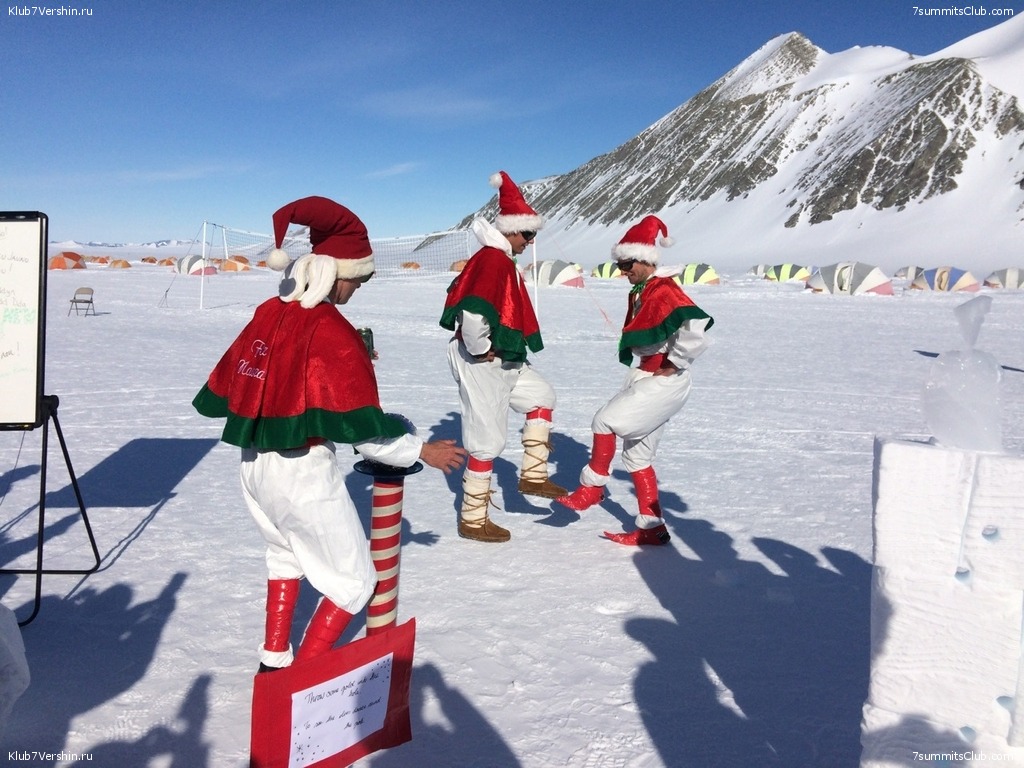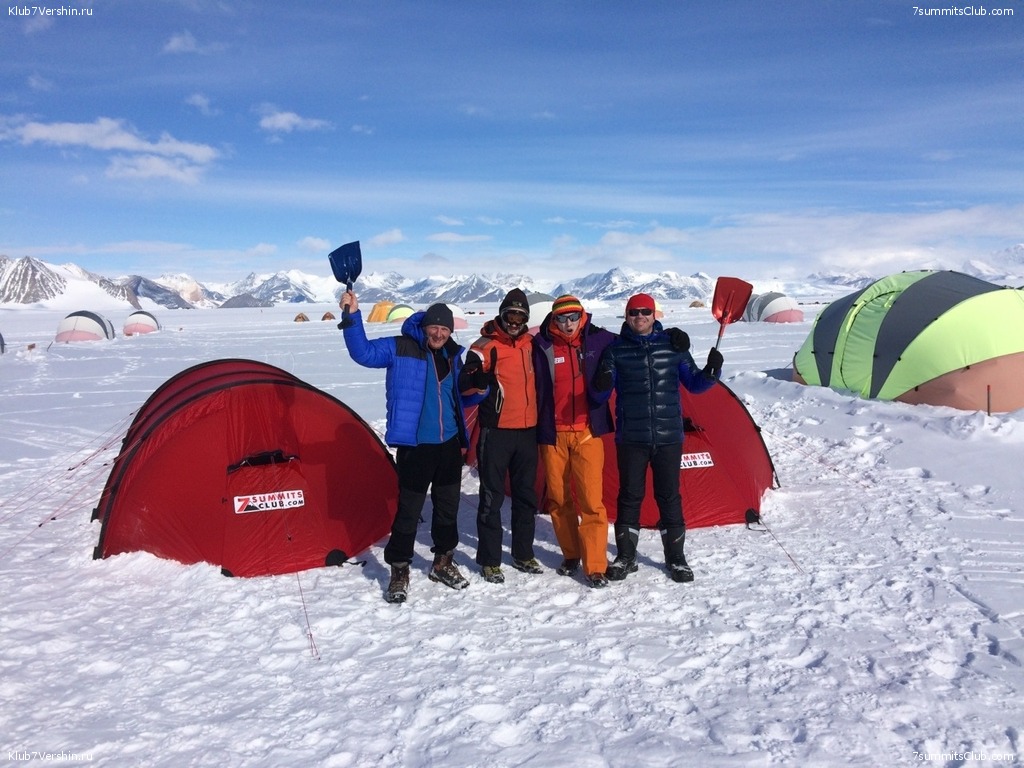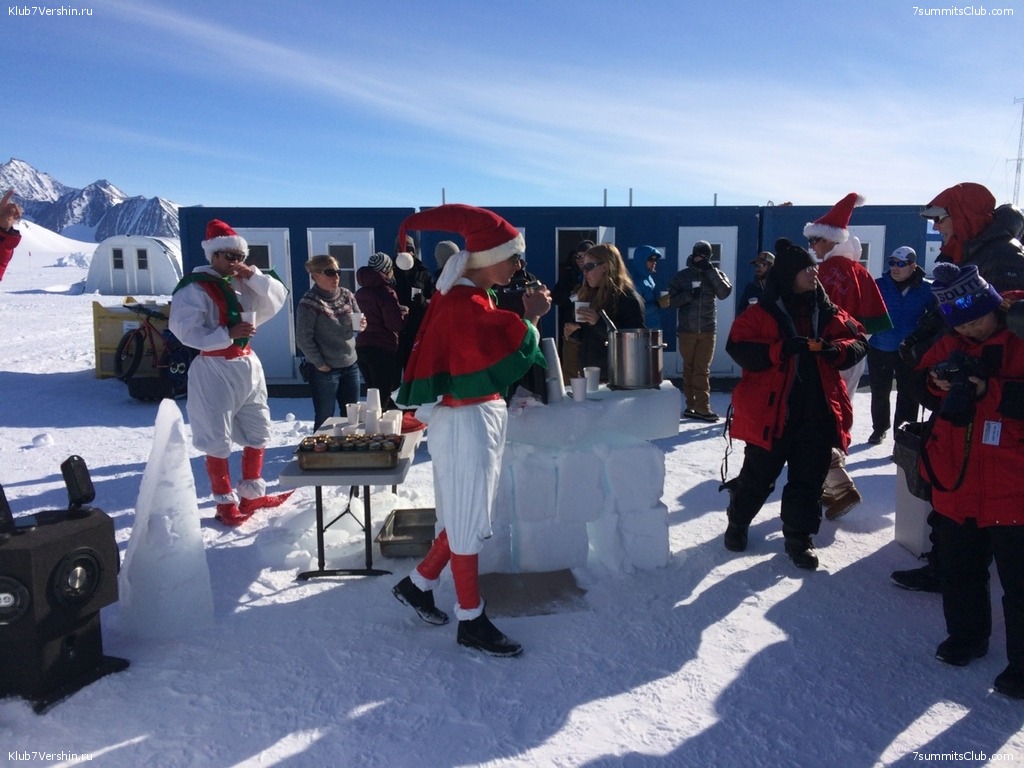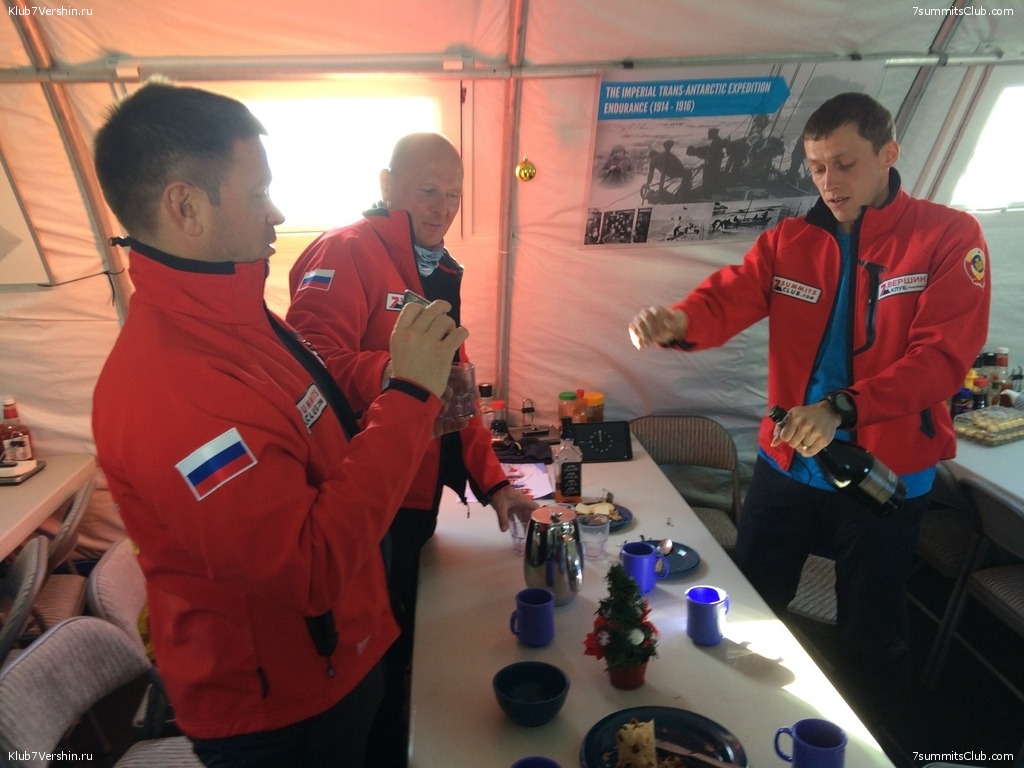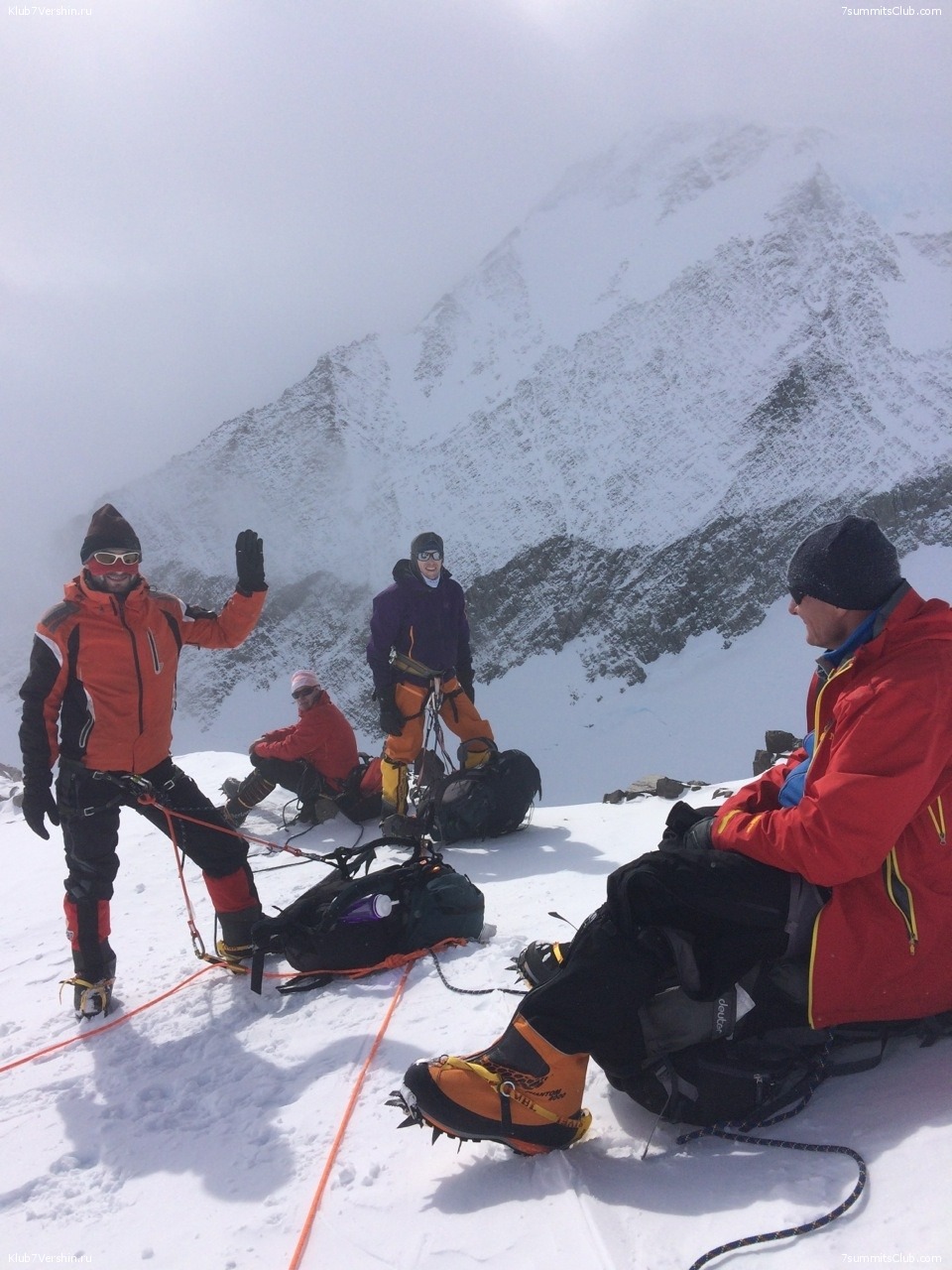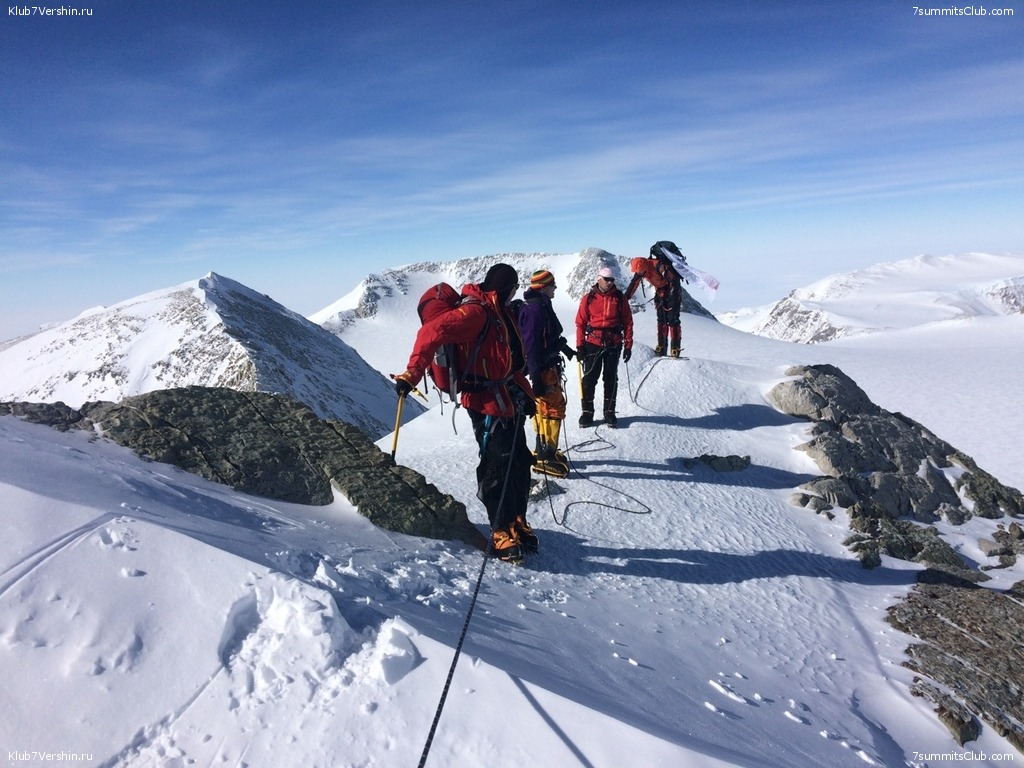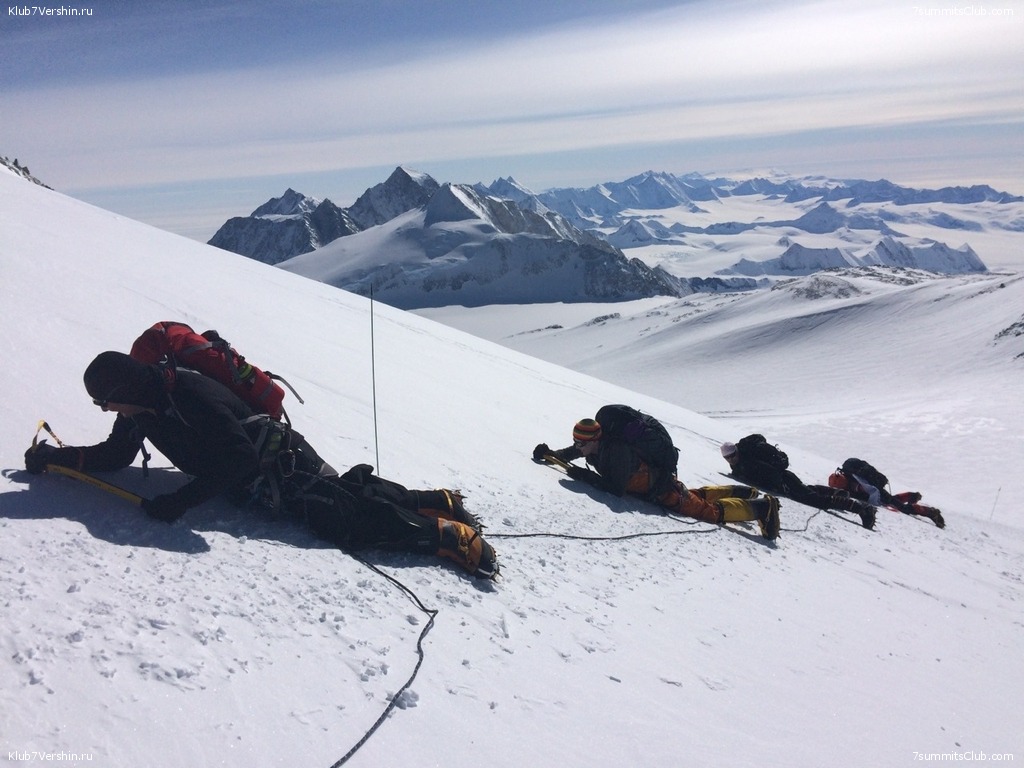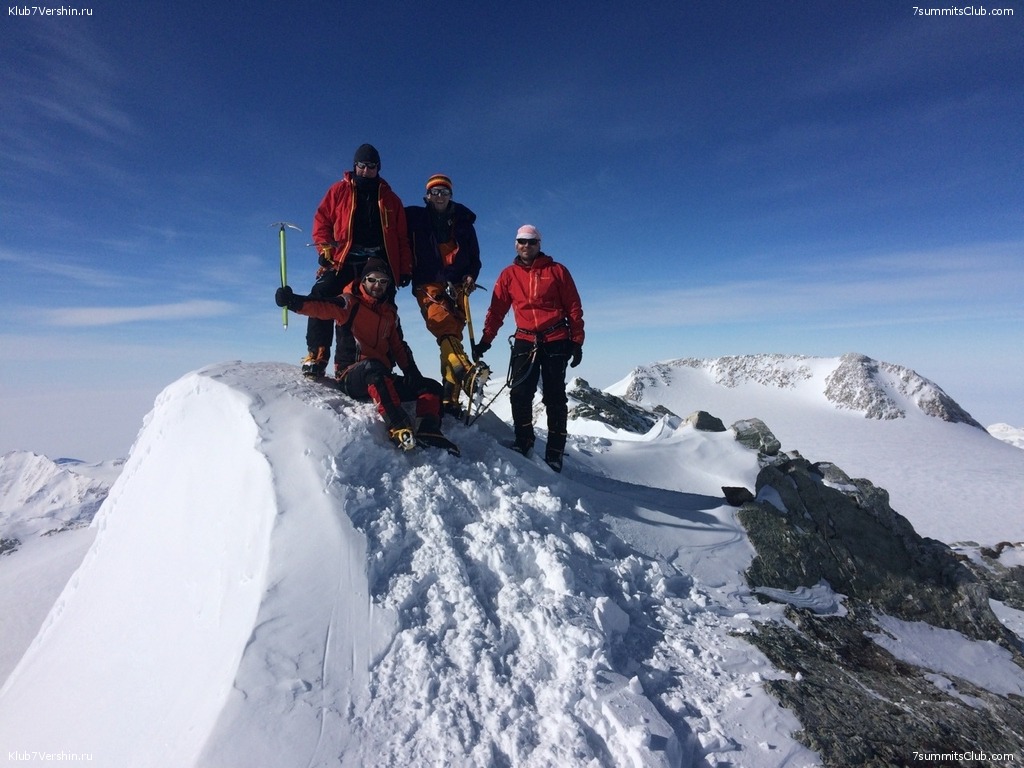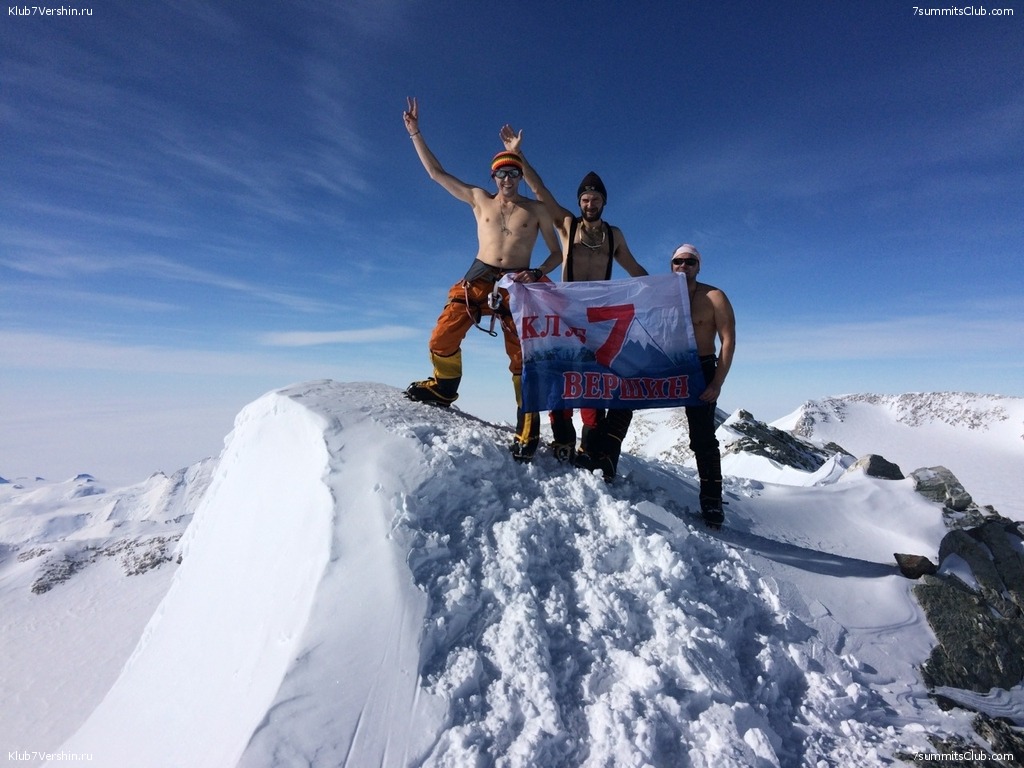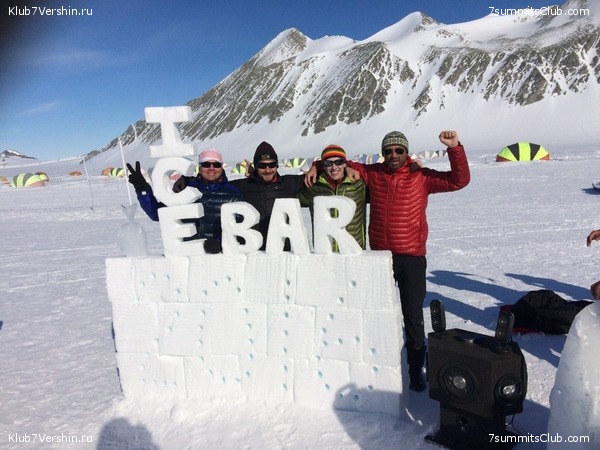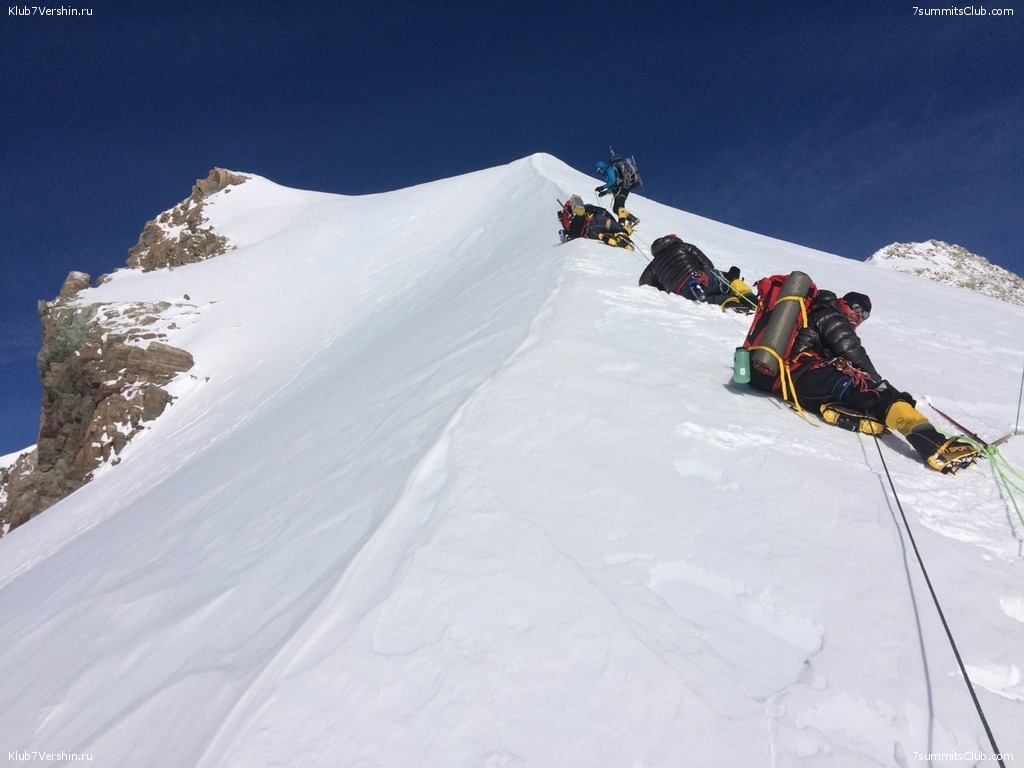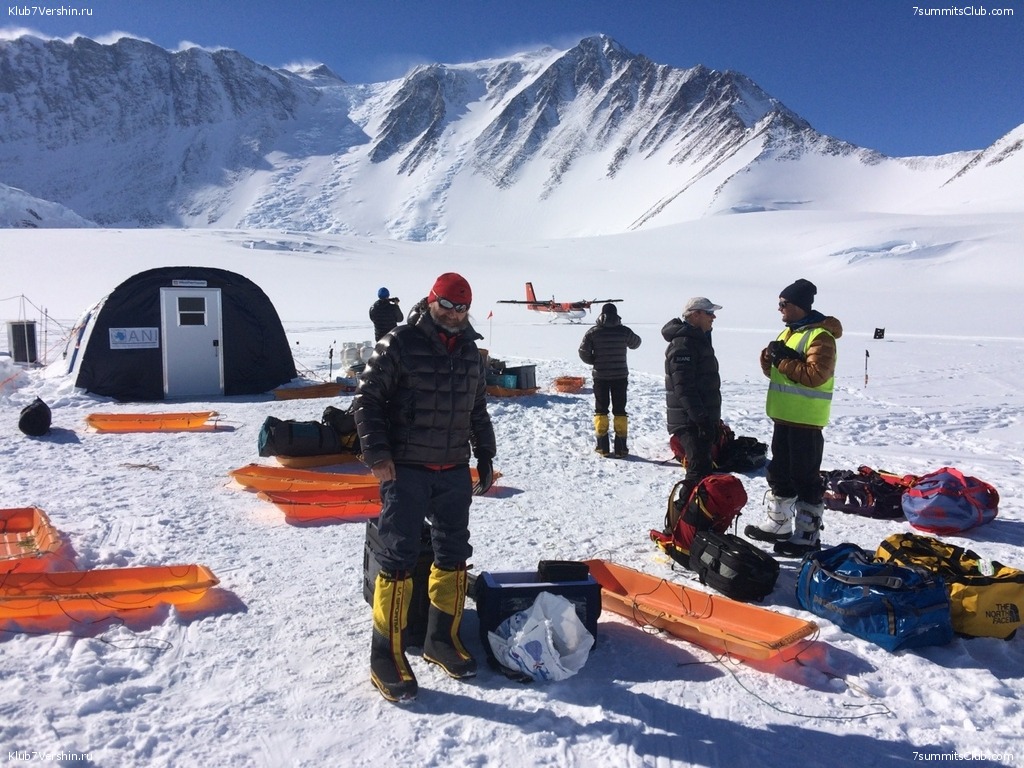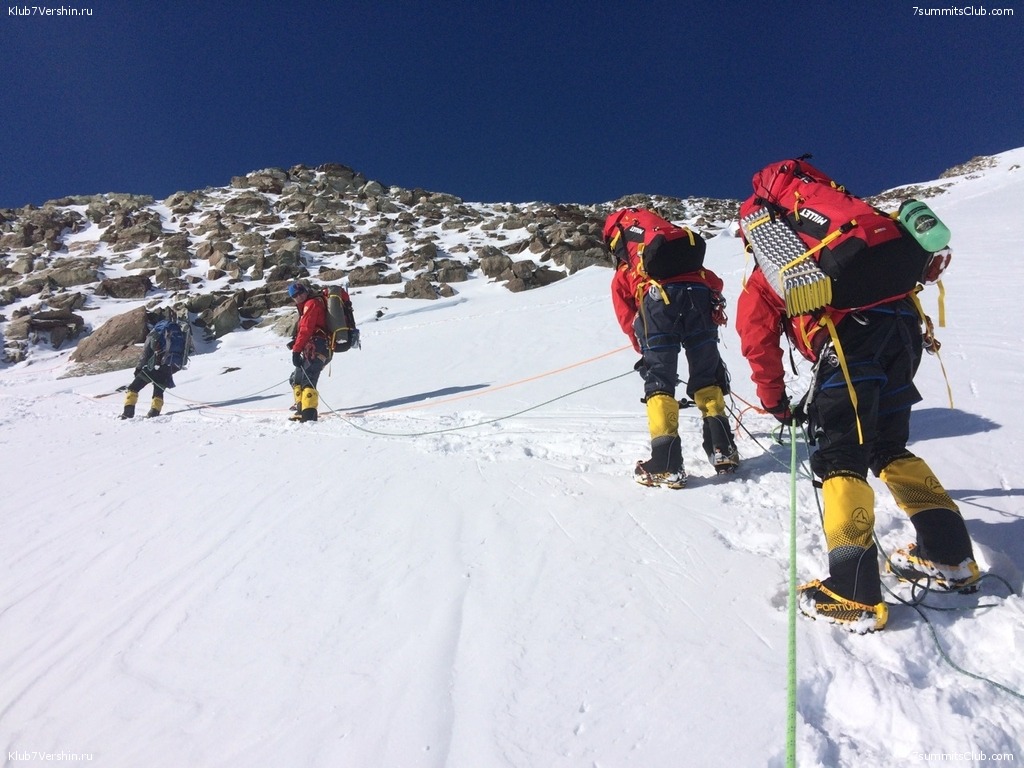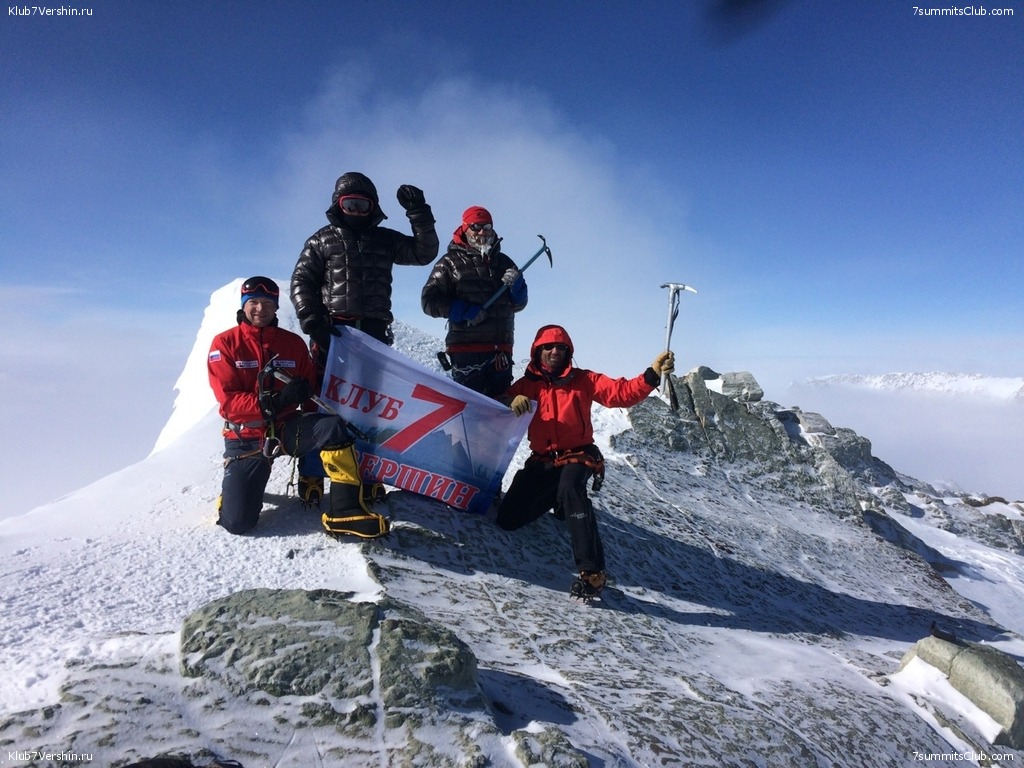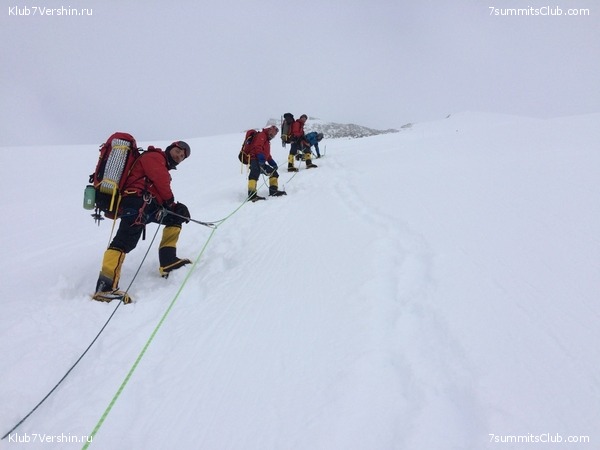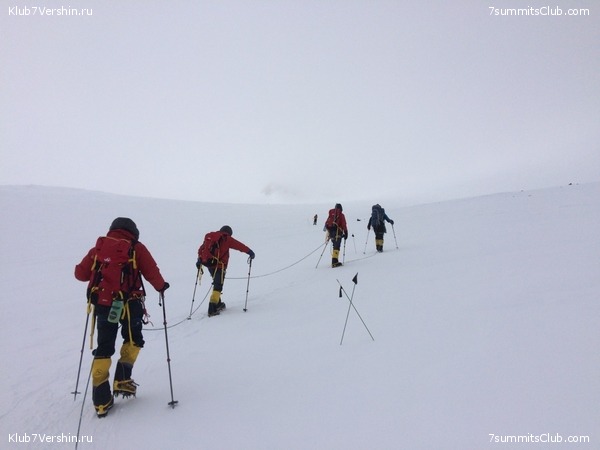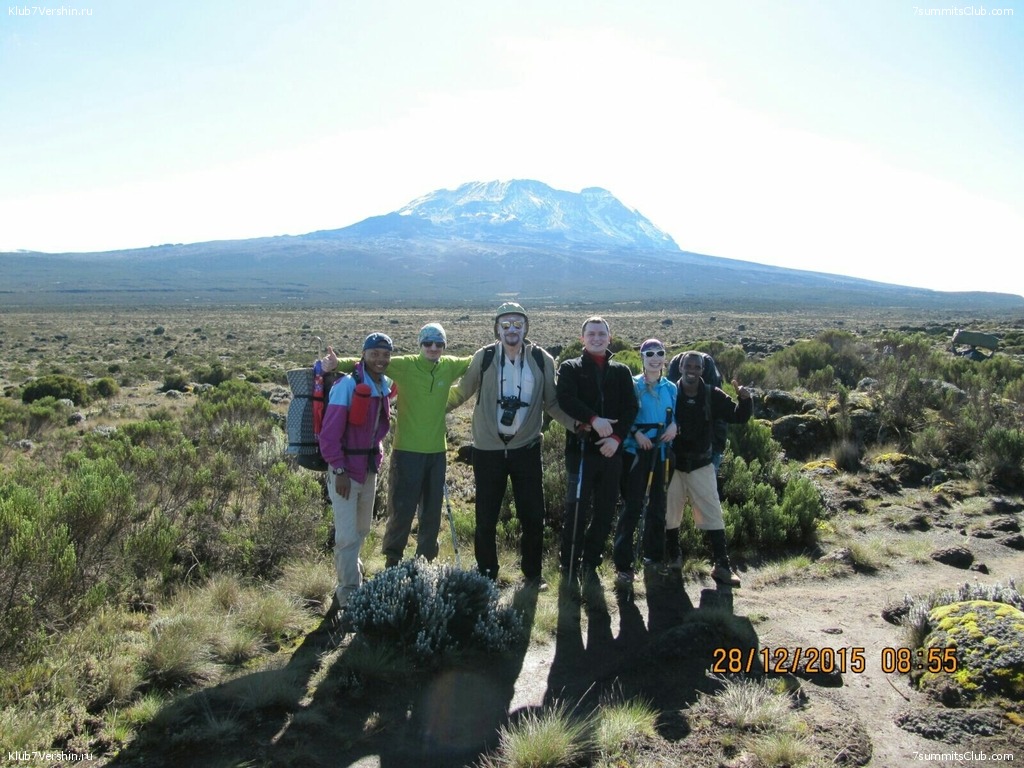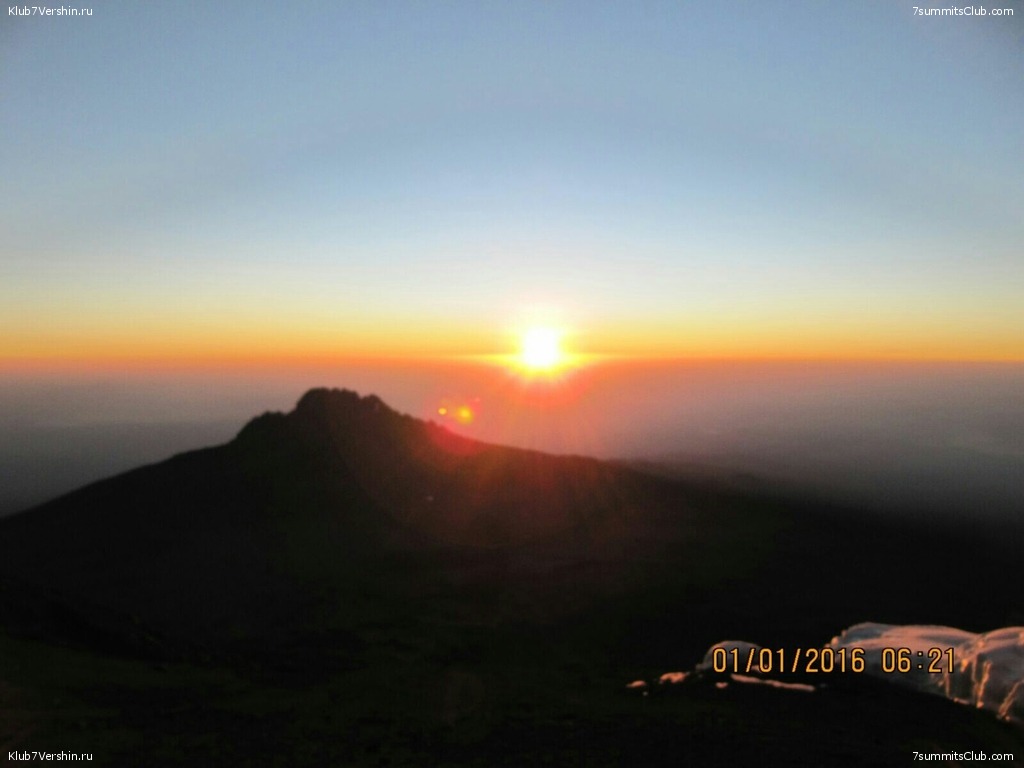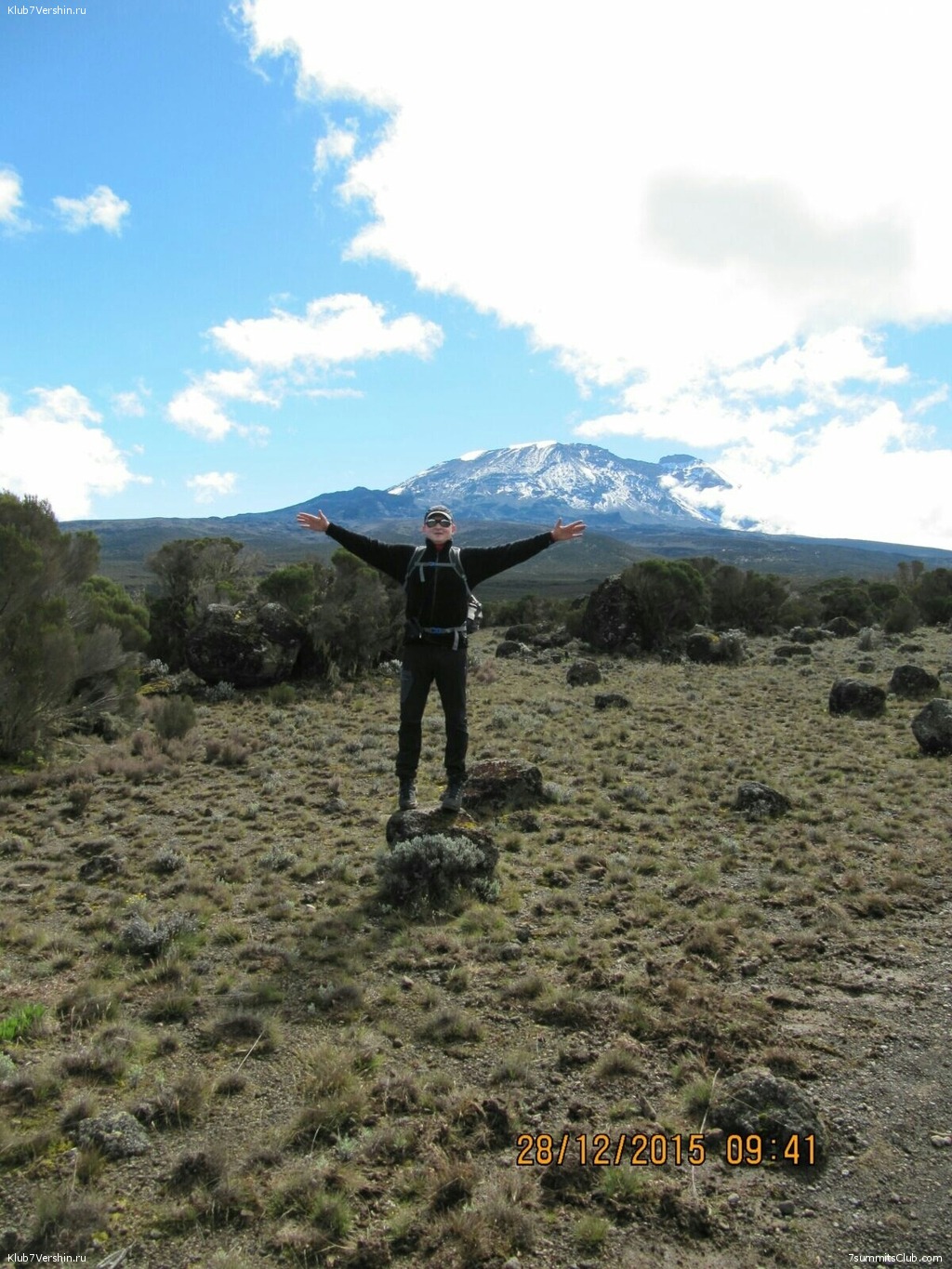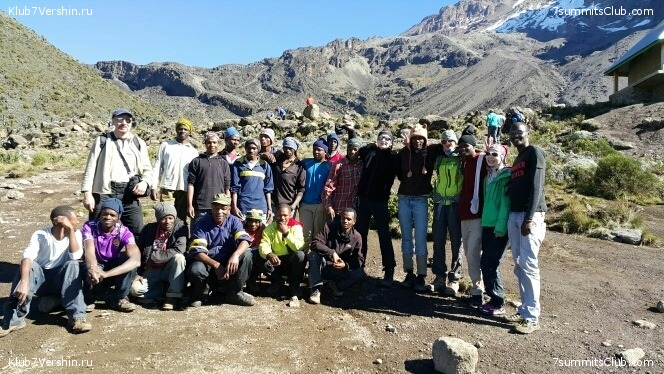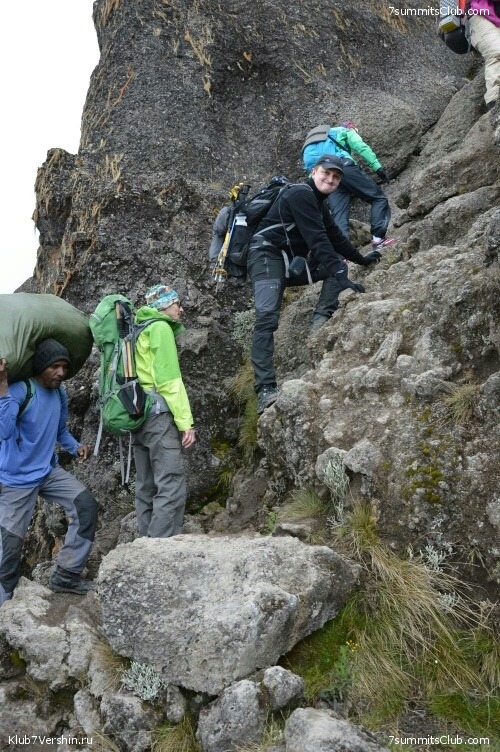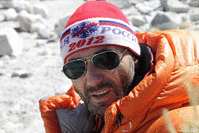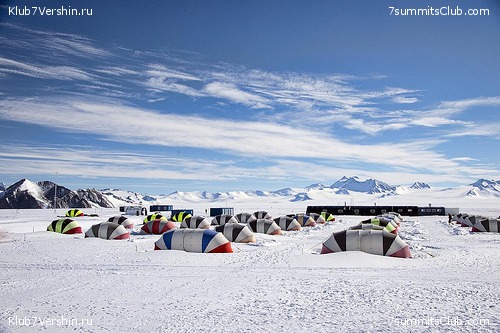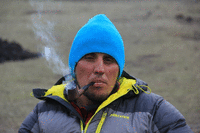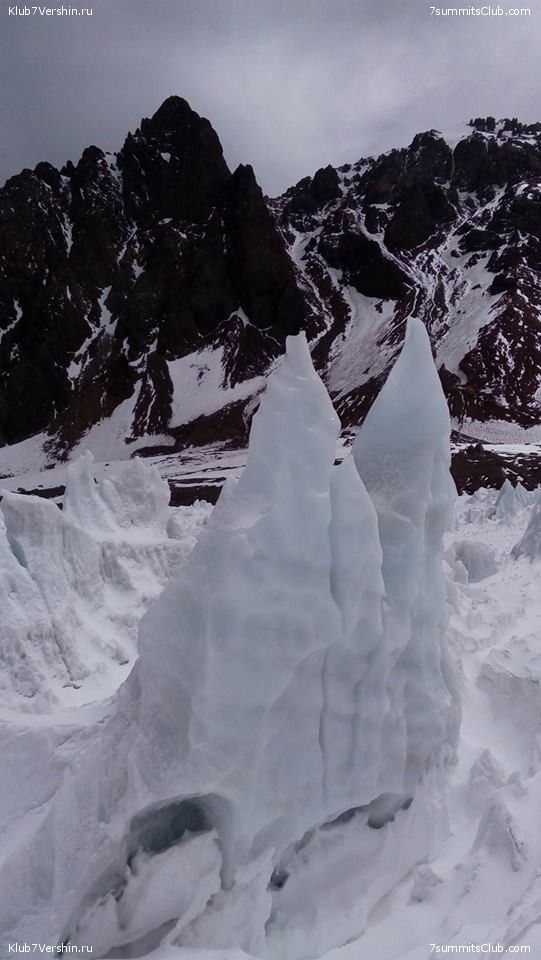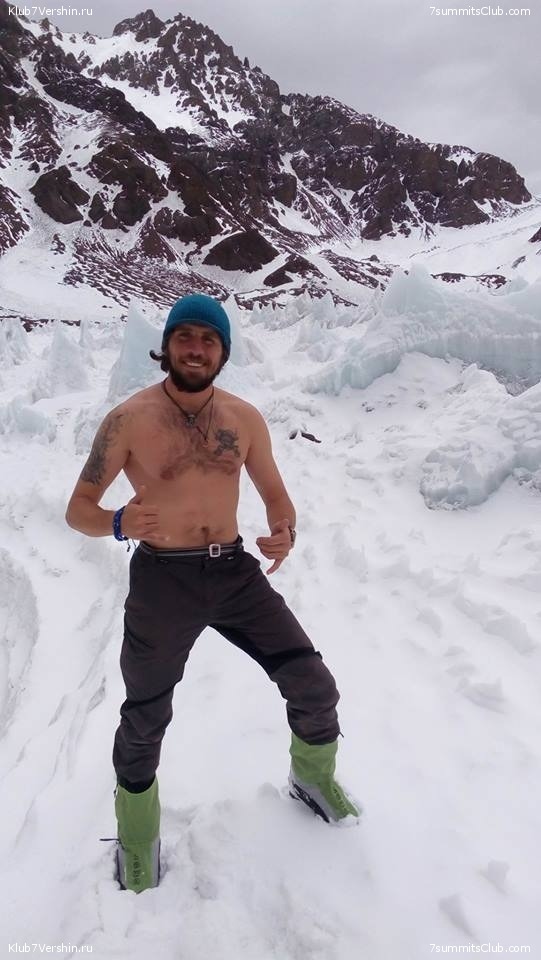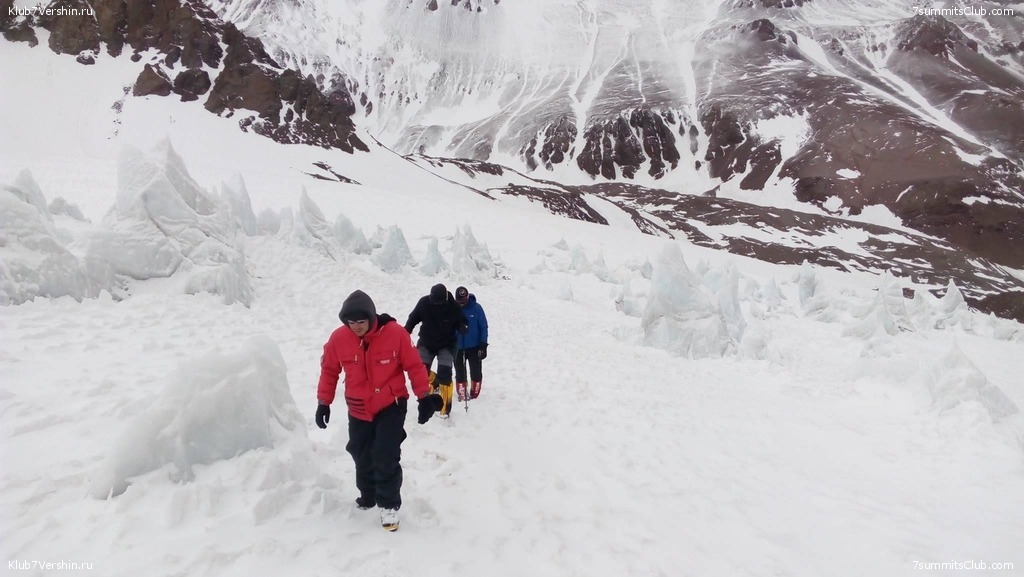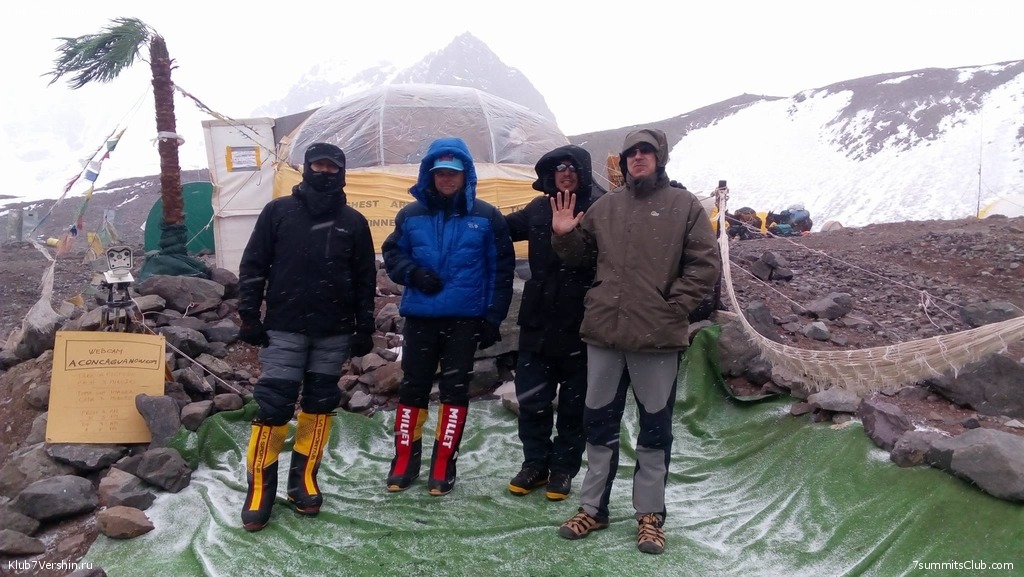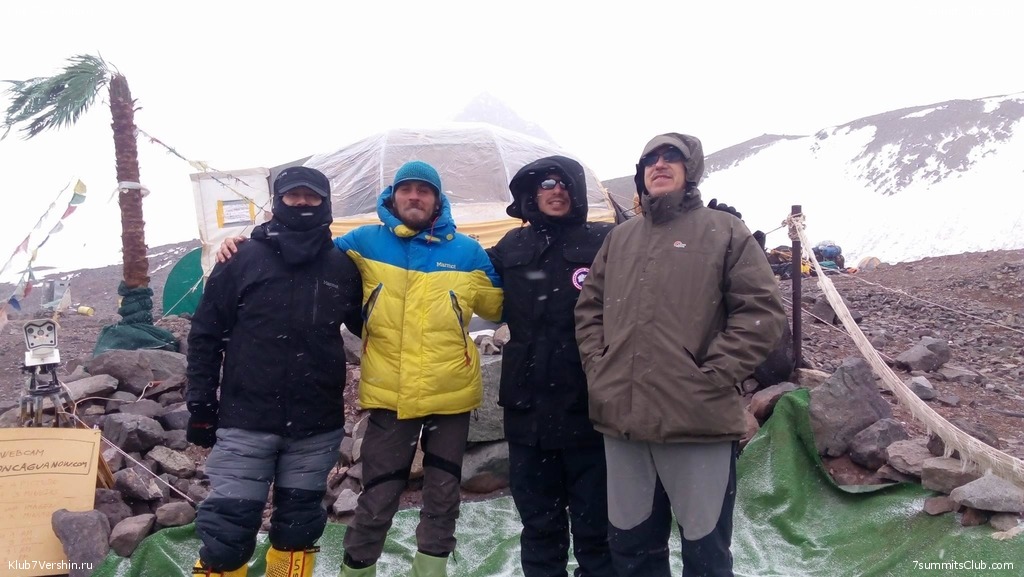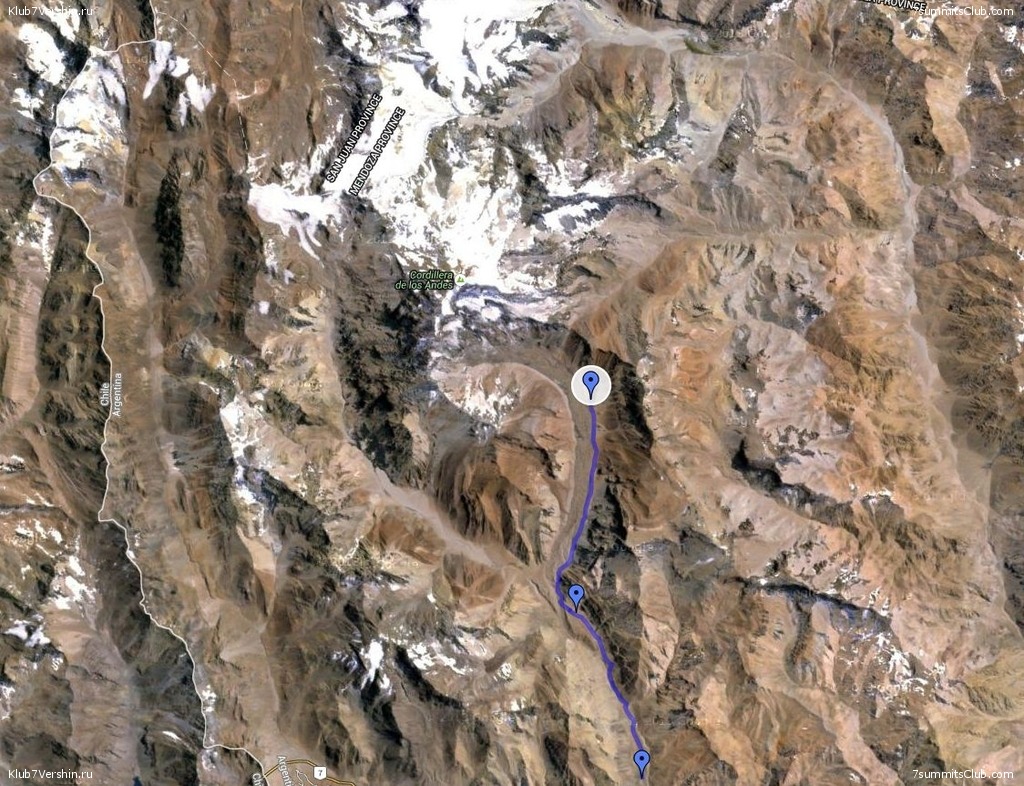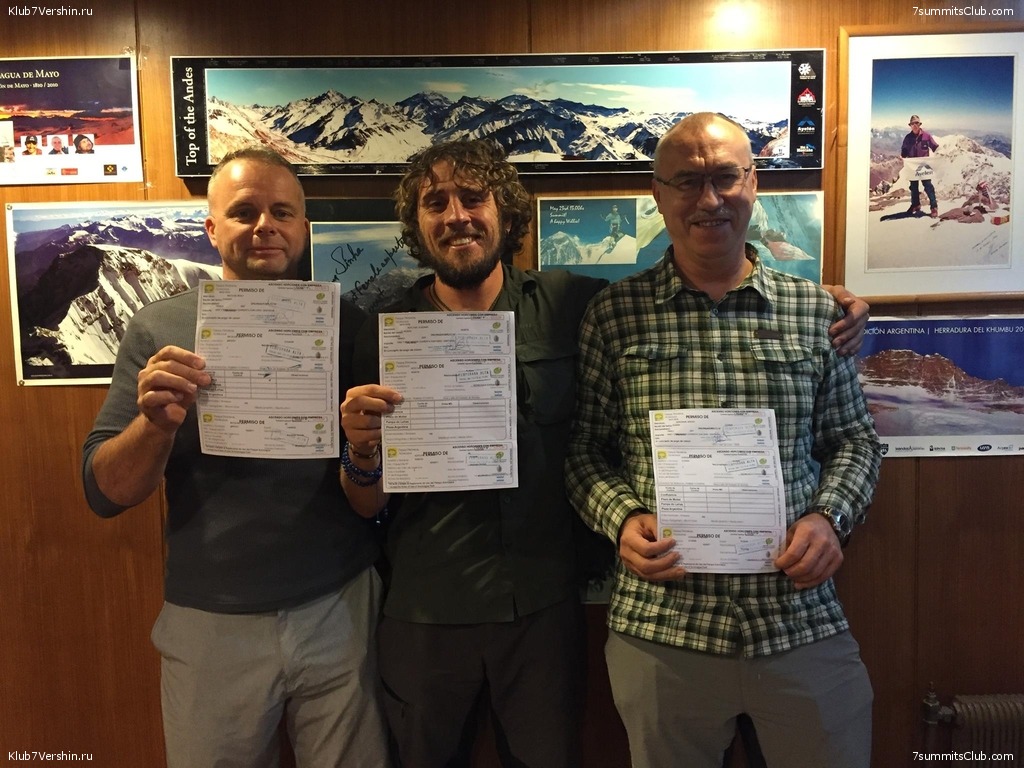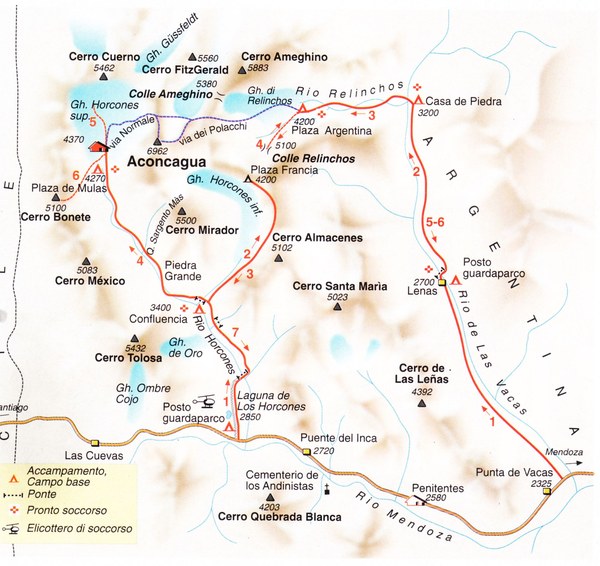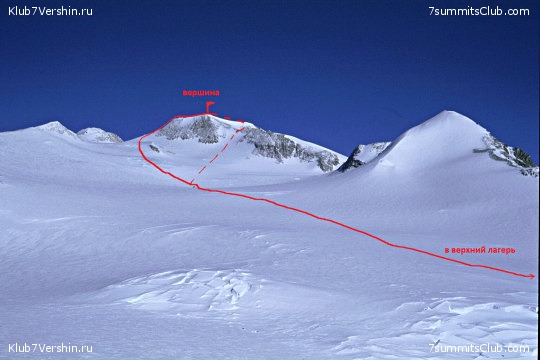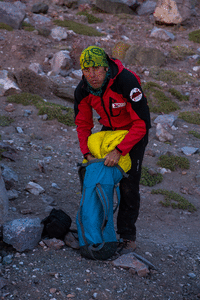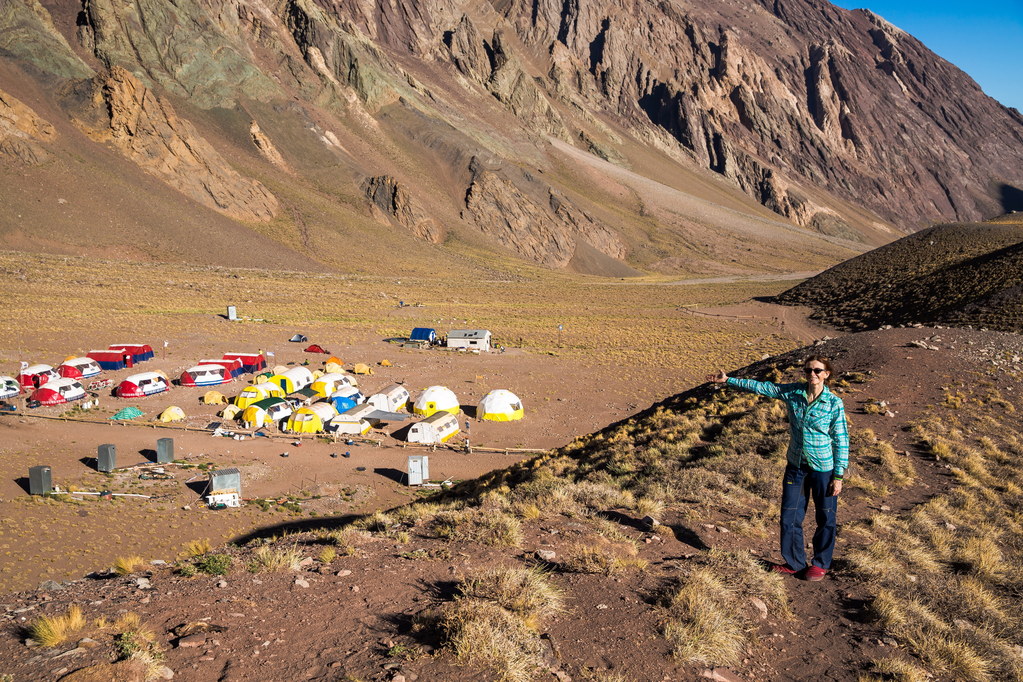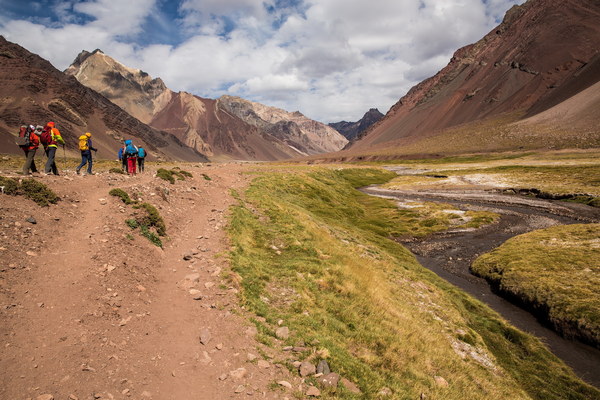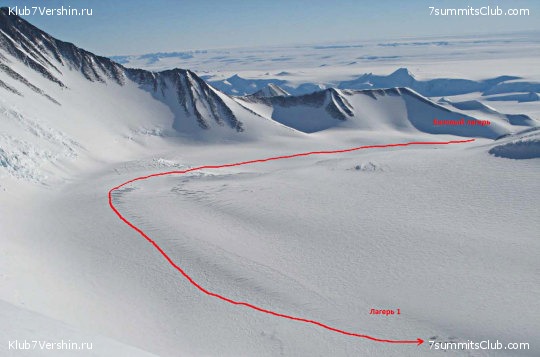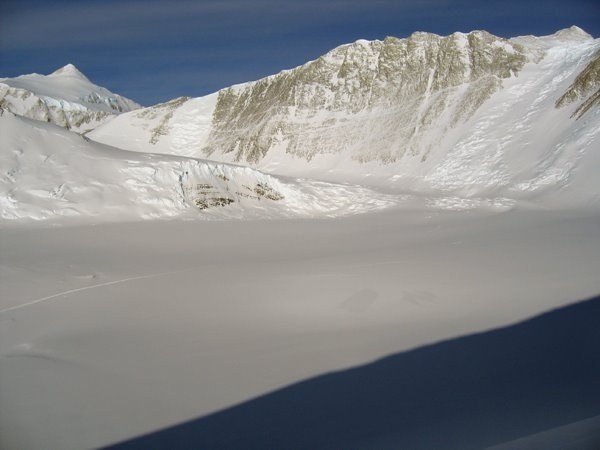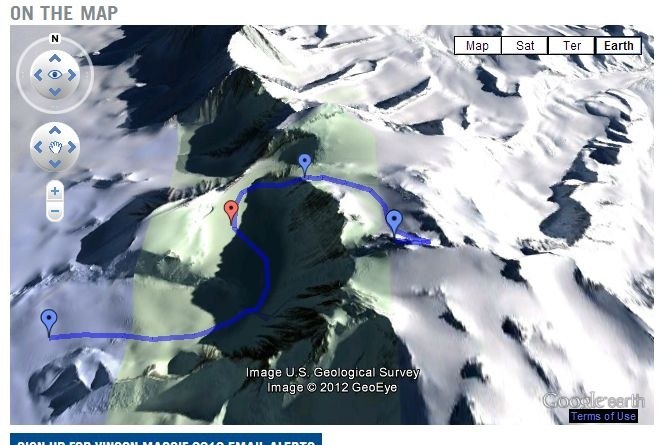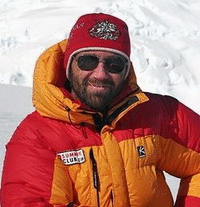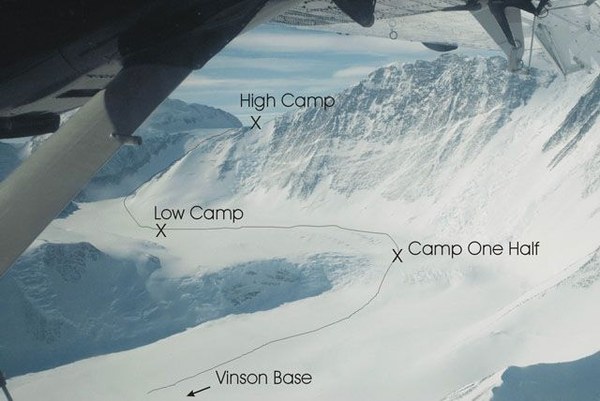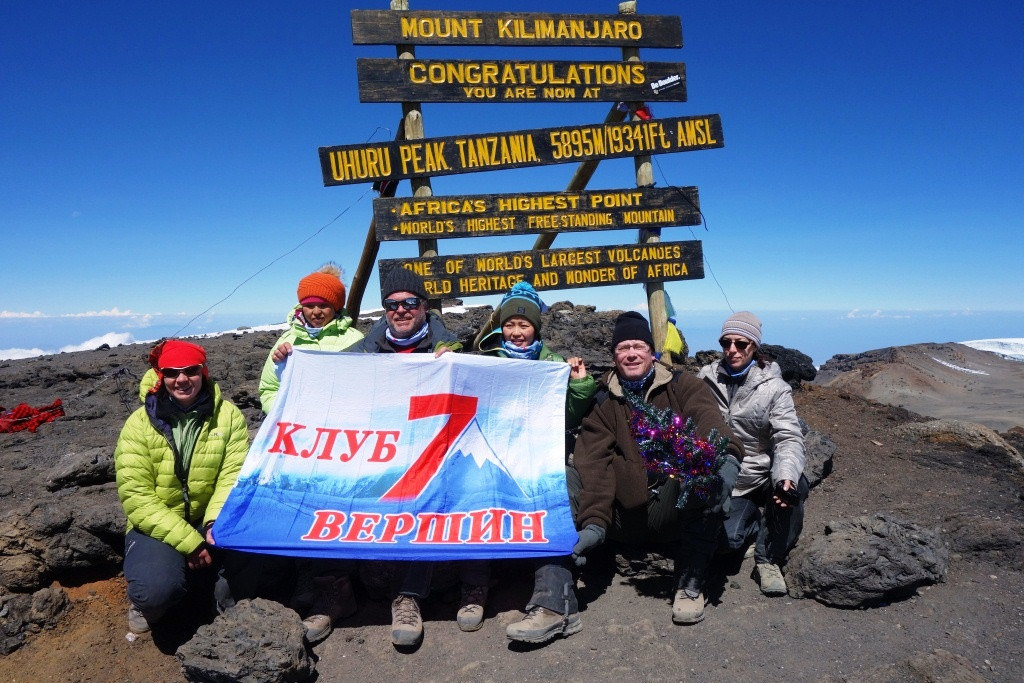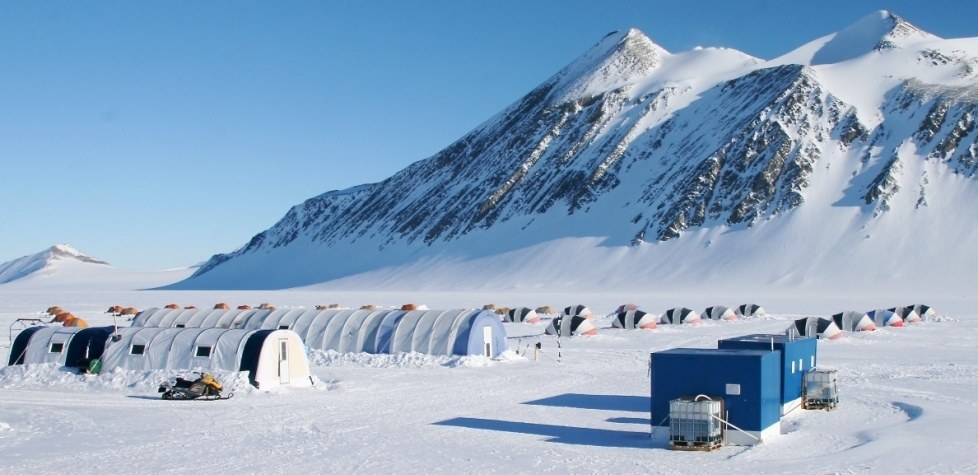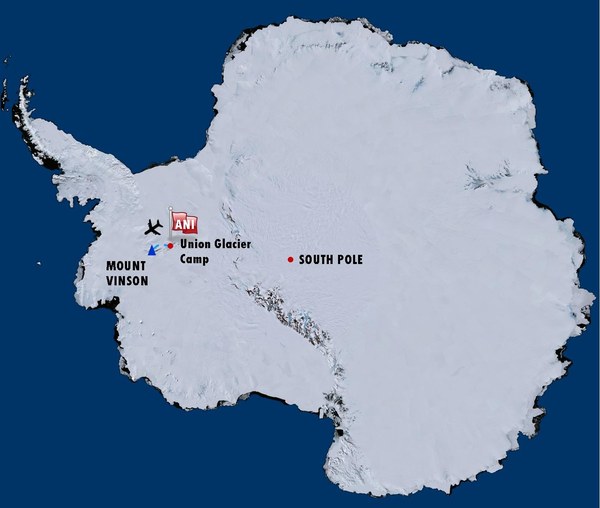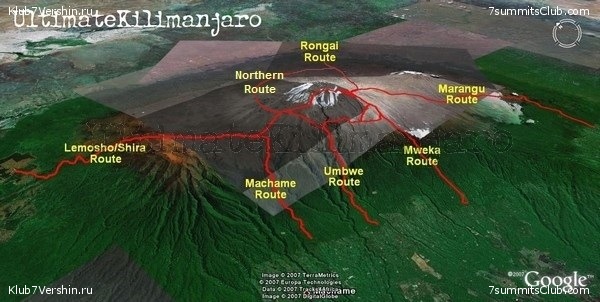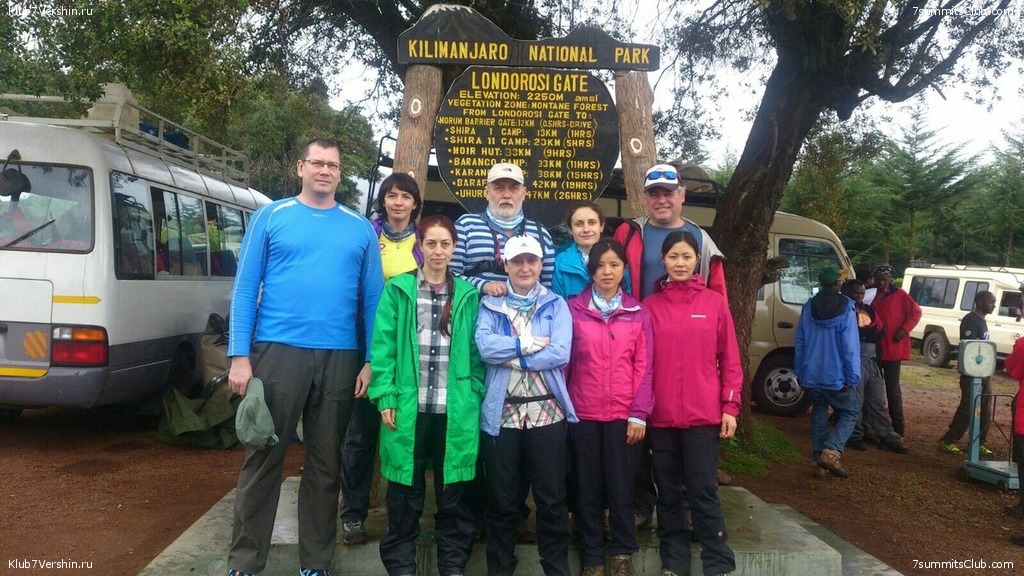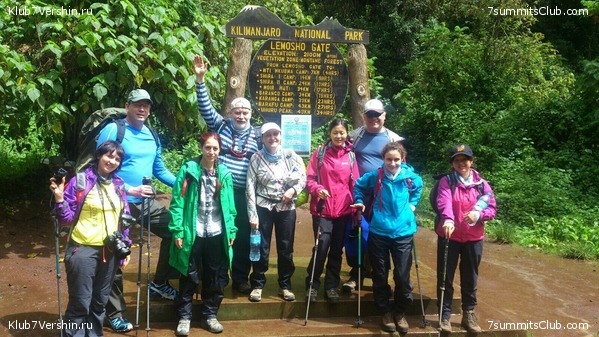"7 Summits + 2 Poles" project news - Page 131
SUMMIT !!! The team sends greetings from the top of Aconcagua, the highest point of North and South America !!!
Aconcagua.
We are on the top !!! It says Vladimir Kotlyar, the 7 Summits Club. With me here are Sergey, Eugene and Daniil. We are standing now at the top, all together! Weather is wonderful! View stunning. And it is not cold - we are even ...
We are on the top !!! It says Vladimir Kotlyar, the 7 Summits Club. With me here are Sergey, Eugene and Daniil. We are standing now at the top, all together! Weather is wonderful! View stunning. And it is not cold - we are even not frozen.
We send greetings to all those who hear us!
Sergei, let's say something!
- Hello everybody, hooray!
So succinctly, curtly. Well, brevity - the sister of talent.
Daniel, there's nothing to say home?
- Hello to all friends, family, friends, that is all! Kisses!
In my opinion, only my emotions going through the roof. Personally, I do ... Such a beautiful day, stunning views!
Well, greetings from the 7 Summits Club and our team, named "Robinson and the three musketeers!"
We climbed up, well now – go down to drink beer. And wine ... And to warm our bones. Adios!
Vladimir Kotlyar with the group is in a Cholera camp. In the morning - out assault on Aconcagua
Aconcagua.
Hello everybody! It is Vladimir Kotlyar. We are sitting now, having dinner in a tent in the high camp Cholera, at six thousands. Wind, of course, is very strong. It seems that the tent was about to leave for a flight. But it's ...
Hello everybody! It is Vladimir Kotlyar. We are sitting now, having dinner in a tent in the high camp Cholera, at six thousands. Wind, of course, is very strong. It seems that the tent was about to leave for a flight. But it's probably good - if we raise the right to the top. And actually, jokes joke, it is not best condition for climb, we will fight. At five in the morning, we will try to exit on the summit bid, we will break through. Because this is the only one weather window, the unique opportunity in those days, that we set to climb. So, wish us luck! Adios! We will do everything possible to reach the summit of Aconcagua.
Photos from Machame route on Kilimanjaro by Alexey Gribkov
Kilimanjaro.
A group of the 7 Summits Club composed of two married pairs: Alexey and Olga Gribkovs, Stanislav and Lyubov Naryshkins - successfully climbed Kilimanjaro by Machame route. They sent us several pictures: ...
A group of the 7 Summits Club composed of two married pairs: Alexey and Olga Gribkovs, Stanislav and Lyubov Naryshkins - successfully climbed Kilimanjaro by Machame route.
They sent us several pictures:
A Rest Day for the group "Robinson and the Three Musketeers," at Plaza de Mulas
Aconcagua.
Vladimir Kotlyar from the Plaza de Mulas camp (expedition to Aconcagua): I send you some pictures of the team "Robinson and The Three Musketeers." Today we have a day of rest and have the opportunity to use the Internet. But, in truth, it ...
Vladimir Kotlyar from the Plaza de Mulas camp (expedition to Aconcagua): I send you some pictures of the team "Robinson and The Three Musketeers." Today we have a day of rest and have the opportunity to use the Internet. But, in truth, it is not the fastest))), so not a lot of pictures. I promise more photos on return to Moscow))
It is a joke
Information from Vladimir Kotlyar, who met a new group of climbers on Aconcagua
Aconcagua.
Hello! It is Vladimir Kotlyar. The group gathered in the city of Mendoza. Mendoza met us by cloudy weather and the long-awaited cool. We are four, Sergei Shilkin, Eugene Kraft, Daniel Birman and me. Right as Robinson and the three ...
Hello! It is Vladimir Kotlyar. The group gathered in the city of Mendoza. Mendoza met us by cloudy weather and the long-awaited cool. We are four, Sergei Shilkin, Eugene Kraft, Daniel Birman and me. Right as Robinson and the three Musketeers))))
We could not leave Mendoza today because a mudflow ruined road, it is closed. In order not to waste time in vain the command "Robinson and the three Musketeers" decided to take fitness! Not only vine and steaks!
Mudflow that went between Confluencia and Horkones:
Expedition on Aconcagua: this time without the summit. PHOTO
Aconcagua.
Vladimir Kotlyar: Unfortunately, we have not reached the top of Aconcagua. Sergey was very froze and we decided to go down ...
Vladimir Kotlyar: Unfortunately, we have not reached the top of Aconcagua. Sergey was very froze and we decided to go down ...
SUMMIT! Congratulations to our friends on the successful ascent of Kilimanjaro! PHOTOS
Kilimanjaro.
News by Yuri Gurgov from Tanzania: a team consisting of four friends successfully climbed the highest peak in Africa, Mount Kilimanjaro. At the top there were: YURI Gurgov, Gleb GOGOLENKO, Igor Koval and Mikhail Komarov. The group climbed ...
News by Yuri Gurgov from Tanzania: a team consisting of four friends successfully climbed the highest peak in Africa, Mount Kilimanjaro. At the top there were: YURI Gurgov, Gleb GOGOLENKO, Igor Koval and Mikhail Komarov. The group climbed by the route Lemosho.
Congratulations to all guys with the summit! We wish to continue the route to the all Seven!
Photo gallery of the second group of 7 Summits Club on the Vinson Massif
Vinson.
January 5, 2016 the second in season team of 7 Summits Club under the leadership of Alexander Abramov climbed to the highest point of Antarctica.Alexander Abramov reported from the summit of Vinson Massif: "Our whole team has reached the ...
January 5, 2016 the second in season team of 7 Summits Club under the leadership of Alexander Abramov climbed to the highest point of Antarctica.
Alexander Abramov reported from the summit of Vinson Massif: "Our whole team has reached the top - Mikhail, Roman, Janusz, Kirill and, of course, I, Alexander. Kirill then immediately “stripped” to celebrate it... It's nothing, because the weather is perfect. We walked all the time in the windless, it was hot. Can you imagine such Antarctica "!
Photo gallery of the first group of 7 Summits Club on the top of the Vinson Massif
Vinson.
December 27, 2015 a team of 7 Summits Club led by Alexander Abramov climbed the highest point of Antarctica. Hello! This is Alex Abramov. I run my report from the summit of the Massif Vinson. We are the first and only team, which today ...
December 27, 2015 a team of 7 Summits Club led by Alexander Abramov climbed the highest point of Antarctica.
Hello! This is Alex Abramov. I run my report from the summit of the Massif Vinson. We are the first and only team, which today climbed to the highest point. The weather is beautiful, and it is almost no wind! I did not even put a down jacket ... there are lovely views around, however, some clouds, but no wind .. We took a chance, went out in bad weather, and guessed. At the top are staying now: Alexey, Dmitry, Vasily, and our American friends ANI guides Scott, Næss and Andy. And, of course, your humble servant, Alexander Abramov.
New Year on Kilimanjaro. Some results
Kilimanjaro.
We want to congratulate you with New Year! Let it will bring good luck and will open new horizons! And also we would like to draw some conclusions on the completion of the New Year period on Kilimanjaro Namely, we want to note that last ...
We want to congratulate you with New Year! Let it will bring good luck and will open new horizons! And also we would like to draw some conclusions on the completion of the New Year period on Kilimanjaro
Namely, we want to note that last month (mid Dec 2015 to mid January 2016) 9 groups with a total of 39 people climbed on Kilimanjaro with the "7 Summits Club".
Group climbed from different sides of the volcano, by the route - Marangu, Machame, Lemosho with local Tanzanian and Russian guides.
For someone Kilimanjaro was the first summit, for others it was the next peak after Everest. The youngest participant was 14 years old, the most experienced - 70. They also reached the top of Africa.
32 persons of 39 reached the highest point in Africa (Uhuru peak 5895 m), it is about 84% of successful ascents.
Photos by Ramil Biktashev, Kilimanjaro LEMOSHO 26 Dec - 3 Jan 2016. New year at the top
Group of Alexander Abramov arrived at the Union Glacier and waits for departure to Punta Arenas
Vinson.
Hello! This is Alexander Abramov from the Union Glacier. We just came from Vinson base camp. Some days here there was a very strong wind, bad weather. However, we were landed at Union Glacier ... Soon enough, that is, at about 20 hours, ...
Hello! This is Alexander Abramov from the Union Glacier. We just came from Vinson base camp. Some days here there was a very strong wind, bad weather. However, we were landed at Union Glacier ... Soon enough, that is, at about 20 hours, Ilyushin should theoretically arrive. Weather is improving, wind calmed down ...
I think, to a meeting in Punta Arenas tomorrow. Bye!
Vladimir Kotlyar from the Plaza de Mulas Camp: our group is acclimatizing and will be waiting for the weather. PHOTOS
Aconcagua.
Hello! Here Vladimir Kotlyar a guide of the 7 Summits Club from Plaza de Mulas. Today we had an active rest day. We walked on a glacier, had a walk to the old, but the broken shelter. In general, we are quietly acclimatizing. Now we have ...
Hello! Here Vladimir Kotlyar a guide of the 7 Summits Club from Plaza de Mulas. Today we had an active rest day. We walked on a glacier, had a walk to the old, but the broken shelter. In general, we are quietly acclimatizing. Now we have passed the "Medical check" - in the morning. A couple of people asked to visit second time. But we hope we will catch up by acclimatization. And basically, we feel good, ready for the climb. The only thing - that the bad weather. So we will be waiting, looking out a weather window.
Best regards, from our team!
Group of Vladimir Kotlyar acclimatizes under the South Face of Aconcagua
Aconcagua.
Buenas tardes, amigos! It is Vladimir Kotlyar, an expedition on Aconcagua. We are, united in our troika, are almost at the foot of the South Face of Aconcagua. However, nothing can be seen. The weather is bad. Everything is covered with ...
Buenas tardes, amigos! It is Vladimir Kotlyar, an expedition on Aconcagua. We are, united in our troika, are almost at the foot of the South Face of Aconcagua. However, nothing can be seen. The weather is bad. Everything is covered with clouds, snow. Right as Russian winter, or, well, a Canadian one. All we are OK, wonderful. We have come here with ease. And now, after a light lunch at this height, we are going to go down there to meet the second part of our group. All the best to all, Adios! Wish us luck, the weather!
SUMMIT! The team of Alexander Abramov sends greetings from the highest point of Antarctica!
Vinson.
Hello! This is Alex Abramov – from the top of Vinson Massif! Whole our team has climbed to the top: Mikhail, Roman, Janusz, Kirill and I, Alexander. Kirill undressed then just to celebrate ... It's nothing, because the weather is ...
Hello! This is Alex Abramov – from the top of Vinson Massif! Whole our team has climbed to the top: Mikhail, Roman, Janusz, Kirill and I, Alexander. Kirill undressed then just to celebrate ... It's nothing, because the weather is perfect. We walked all the time in the windless, it was hot. Can you imagine such we are in Antarctica! Boys, too, are preparing for undressing. If we do not freeze, then immediately will flee to the High camp. Congratulate us: anything we wanted, we have achieved. We now have a long, a very long way home. Best regards!!!
Listen to an audio message:
Expedition on Aconcagua: our guide Vladimir Kotlyar with the group climbed to the camp Confluencia
Aconcagua.
Hi everybody! It says Vladimir Kotlyar, a guide of an expedition on Aconcagua. We are now in the first camp, where we'll stay 2 days for acclimatization. Plaza Confluencia – on called this place. Now we sit, eat, gather strength. We ...
Hi everybody! It says Vladimir Kotlyar, a guide of an expedition on Aconcagua. We are now in the first camp, where we'll stay 2 days for acclimatization. Plaza Confluencia – on called this place. Now we sit, eat, gather strength. We went up not at 3 hours according a standard schedule, but less than 2 hours. While we were not in a hurry, we go slowly watching birds, surrounding landscape. In principle, it can not but rejoice. Hence, more time to rest .... (laughs) ... We all are well. We send greetings to our homeland: Canada, Voronezh, and in my lovely Caucasus, in Elbrus! To all my friends! By!
Alex Abramov from the Low camp of Mount Vinson
Vinson.
Hello! This is Alex Abramov from Antarctica. Today we had a full day of rest. Today we ate three times plus had second lunch. Very well cooked and tasty. And then learn to tie knots, and talked about everything: life, children and all, as ...
Hello! This is Alex Abramov from Antarctica. Today we had a full day of rest. Today we ate three times plus had second lunch. Very well cooked and tasty. And then learn to tie knots, and talked about everything: life, children and all, as men talk in the mountains. Tomorrow we are going to climb. The following information will be tomorrow night. Weather improves, it is clear, the sun is shining, the wind at the top gradually decreases. I think we got a good climb. All Goodbye!
The Group of Alexander Abramov - Vinson-2 has completed the acclimatization and is resting before the summit bid
Vinson.
Hello! This is Alex Abramov from Antarctica. How did you hear, a kerosene stove noises in our tent. Now it is midnight. The sun shines, though, through the clouds. Today we went up to the High camp, to an assault camp. We brought up ...
Hello! This is Alex Abramov from Antarctica. How did you hear, a kerosene stove noises in our tent. Now it is midnight. The sun shines, though, through the clouds. Today we went up to the High camp, to an assault camp. We brought up everything we will need, heavy backpacks: products and all equipment needs for climbing. And besides, it was a good for acclimatization. Now we went down into the Low camp. We ate very good, everyone is happy. Tomorrow we have a day of rest. That means, tomorrow we will sleep until midday, then have breakfast, then we have the whole day for preparing to the assault outing. And the next day we start climbing, again in the High camp and then to the summit ....
Listen to audio message:
New Year’s Kilimanjaro SUMMITS: two groups of 7 Summits Club on the top of Mount Kilimanjaro
Kilimanjaro.
All members of our German-American group successfully reached the summit of Kilimanjaro. They celebrated the New Year on the top. The team leader Marcus wrote us word of thanks: «Cheers from a successful climb of Mt Kilimanjaro! ...
All members of our German-American group successfully reached the summit of Kilimanjaro. They celebrated the New Year on the top. The team leader Marcus wrote us word of thanks:
«Cheers from a successful climb of Mt Kilimanjaro! Thanks for organizing this for us! »
Also, on December 31 the group of our guide Olga Rumyantseva reached the summit climbing by the route Lemosho.
Congratulations all summiters!
Alexander Abramov is on Union Glacier, with a new group waiting for the flight to Vinson
Vinson.
Hello! This is Alexander Abramov from Antarctica. Yesterday, a new group arrived: Roman, Michail, Cyril and our Polish friend Janusz. Now our friendly company of five plans how to climb Vinson Massif. As you know from previous reports, the ...
Hello! This is Alexander Abramov from Antarctica. Yesterday, a new group arrived: Roman, Michail, Cyril and our Polish friend Janusz. Now our friendly company of five plans how to climb Vinson Massif. As you know from previous reports, the weather this year is mostly bad. Now we have at Vinson Massif again delayed flights. Those groups that descended from the Summit of Mount Vinson are sitting in the base camp, waiting for departure at Union Glacier. Ilyushin flew away, which was 29th. All teams who want to climb the Vinson Massif had come with it, stay and wait for the flight to the base camp.
Here we have such situation. In principle, the situation is good, because we still have time enough to climb ... So, all good-bye! And until we meet again in the air!
Listen to an audio message:
News and photos from Kilimanjaro. The Group of Olga Rumyantseva goes to the assault camp
Kilimanjaro.
The group of Olga Rumyantseva is climbing Mount Kilimanjaro by the route Lemosho. Today, they are coming to the assault camp - Karanga. According to information from the guides, in the group everything is all right. Everything goes ...
The group of Olga Rumyantseva is climbing Mount Kilimanjaro by the route Lemosho. Today, they are coming to the assault camp - Karanga.
According to information from the guides, in the group everything is all right. Everything goes according to plan. From Moshi this morning porters brought the batch of fresh food and a few bottles of champagne, despite the prohibitions of the national park.
Everything for the team! ))
